2025 ISA World Junior Surfing Championship: Australia Claims Back-to-Back Team Gold Medals

Australian Team for 2025 ISA World Junior Surfing Championship
Surfing Australia is proud to announce the 2025 Australian Junior Irukandjis Team, who will represent the nation at the upcoming ISA World Junior Surfing Championship, set for December 5–14, 2025, at Punta Rocas, Peru.
Team Australia returns as the defending champions, following a historic victory at the 2024 ISA World Junior Championships in El Salvador, where Ziggy Mackenzie and Dane Henry both claimed gold in their respective divisions. The Irukandjis will look to defend their crown on the world stage, showcasing the strength, unity, and depth of talent in Australia’s junior surfing pathway.
The ISA World Surfing Games is one of the sport’s most prestigious events for emerging surf talent, and a proven pathway to the Olympic Games, with more than 80% of Olympic surfers having competed at this event.
2025 Australian Junior Irukandjis Team
UNDER 18 BOYS:
Sam Lowe (Thirroul, NSW): The 2024 Australian Champion, Lowe has been a standout in national competition and will look to bring his powerful, consistent surfing onto the world stage in Peru. Sam is co-captain with Milla Brown.
Mitchell Peterson (Noosa, QLD): Leading the 2025 Australian Junior Series, Peterson has built his season on strong results and consistency, making him one of the in-form surfers in the U18 division.
Maverick Wilson (Dunsborough, WA): The 2023 U16 Australian Junior Series winner, Wilson has quickly established himself among the older division and is currently ranked 4th in the U18 standings.
UNDER 18 GIRLS:
Milla Brown (Bungan, NSW): The 2024 Australian Champion, Brown also represented Australia at the Open ISA World Surfing Championships where the team won gold and she finished 11th in the world in September this year. Milla is co-captain again this World Junior Championships.
Sierra Kerr (Bilinga, QLD): A two-time Junior World Champion, including an ISA World Title, Kerr brings proven international experience and a reputation as one of the most talented juniors in the world.
Isla Huppatz (Burleigh, NSW): Runner-up at the 2024 Australian Junior Championships, Huppatz was part of one of the most progressive women’s finals ever seen in junior surfing, pushing innovation with every heat.
Ziggy Aloha Mackenzie (Bilinga QLD): Ziggy started surfing at age 10 at Bingin Beach. She has been around surfing her whole life but only really started. Taking it seriously at the beginning of the Covid pandemic. Having been a talented gymnast and athlete, it was only natural that she would pick up surfing and fall in love with it quickly. Ziggy won the U16 girls Bukit series. She also won the Tipi Jabrik U16 Grom patrol and placed second at the QS women's at halfway. On Thursday, October 30, 2025 Ziggy Aloha Mackenzie (AUS) won the 2025 Siargao International Surfing Cup World Surf League (WSL) Qualifying Series (QS) 6000 event.
UNDER 16 BOYS:
Ocean Lancaster (Merewether, NSW): The 2024 Australian Champion, Lancaster is known for his smooth style and composure under pressure, setting him up as a key contender in the U16 division.
Caden Francis (Coolangatta, QLD): Recognised for his dynamic air game, Francis will carry international experience into Peru after earning a place at Stab High Japan in 2025.
Max McGillivray (Evans Head, NSW): Runner-Up on the 2024 Australian Junior Series rankings, McGillivray had a breakout year with back-to-back wins at Skull Candy and the Rip Curl GromSearch at Phillip Island.
UNDER 16 GIRLS:
Lucy Darragh (Gerringong,NSW): Fresh off a QS6000 win in Nias, Darragh has proven herself on the Qualifying Series and continues to rise as one of Australia’s most promising junior surfers.
Olive Hardy (Gnarabup, WA): The 2024 Australian Champion, Hardy brings consistency and competitive sharpness that will be crucial in the world-class Punta Rocas lineup.
Charli Hately (Burleigh, NSW): Currently ranked among the top surfers on the Australia/Oceania Qualifying Series, Hately’s 2025 season has included a runner-up at the QS6000 in Nias, underlining her world-class form.
Surfing Australia’s National Junior Coach, Pete Duncan, said the calibre of the 2025 Australian Junior Irukandji’s is undeniable.
“The depth of talent in Australia and our rigorous qualification system mean every athlete has truly earned their place. With four athletes returning from last year’s gold medal-winning team, we’ve got the experience and competitive edge to push for back-to-back titles,” Duncan said.
Surfing Australia’s National High Performance Director, Kate Wilcomes, believes the squad embodies the future of Australian surfing and is ready to rise to the challenge on the world stage.
“Returning as defending champions, the Irukandjis now have an opportunity to build on a golden legacy. Each member has earned their place through hard work, dedication, and consistent performances and we’re excited to see them showcase the team spirit and pride that comes with wearing the green and gold.”
Luke MacDonald, Surfing Australia Head of Pathway Program, said:
“I am thrilled with the team selected to represent Australia at the ISA World Junior Championships in Peru this December. This group of athletes brings real depth of talent and strong competitive experience, and their skill sets are well suited to the powerful waves at Punta Rocas. With the support of Head Coach Pete Duncan and Team Manager Tegan Cronau, the athletes will have every opportunity to perform at their best. After last year’s success and the Opens Team’s recent gold, we are aiming to carry that momentum and once again bring the title back to Australia.”
The Irukandjis will proudly wear the green and gold, joining 57 national teams and hundreds of athletes in what is set to be one of the most competitive ISA World Junior Surfing Championships yet.
Punta Rocas Welcomes the World as 2025 ISA World Junior Surfing Championship Opens in Peru
Punta Rocas, Peru – Friday December 5, 2025, report by ISA
Today, an incredible 424 of the world’s best junior surfers marched in a Parade of Nations along the boardwalk of the Punta Rocas High Performance Centre to join in celebrating the Opening Ceremony of the 2025 ISA World Junior Surfing Championship (WJSC). Held at the iconic break of Punta Rocas, the event will begin competition tomorrow, December 6, and run until December 14.
Representatives from a record 57 national teams make up the massive numbers. Members from each nation joined in the traditional ISA Sands of the World ceremony, pouring sand from their home beaches into one container as a symbol of the peaceful gathering of nations of the world through surfing.
Four teams — Angola, India, Saint Lucia, and Slovenia — are present to compete in the WJSC for the first time. For Saint Lucia, one of the newest ISA member nations, it is their first-ever ISA participation.
The athletes gathered were represented on stage by Australian Team Captain Milla Coco Brown (AUS), who swore an oath of good sportsmanship alongside ISA Judge Jacqueline Silva. Also present on stage were National Director of Recreation and Promotion of Sport for the IPD, Jose Luis Casas, FENTA President, Elfri Alfonso Navarrete Narro, and ISA Vice Presidents, Karin Sierralta and Jean-Luc Arassus.

Photo: Australia Team Captains Milla Coco Brown and Sam Lowe. Photo: ISA/Jersson Barboza
Ten former medallists were amongst the large crowd, including 2024 U/16 World Champions Ziggy Aloha Mackenzie (AUS) and Dylan Donegan (ESP), who will both compete in the U/18 division for the first time. Two-time U/16 medallists Clémence Schorsch (FRA) and Lukas Skinner (ENG) were also present, more determined than ever to claim gold as they debut in the U/18 division.
The WJSC has established itself as a proven pathway to the Olympic Games — of the 72 surfers to have competed at the Olympics so far, 59 previously participated in the event, with 32 earning ISA World Junior medals. This year, the youngest Olympic surfer, Siqi Yang (CHN), will make history as the first current Olympian to return to the WJSC after competing in Paris 2024 at just 15-years-old.
The ceremony closed with a display of the traditional caballitos de totora being ridden in the waves of Punta Rocas, recognizing the long history of surfing in Peru.
ISA President, Fernando Aguerre, said:
“Punta Rocas is a very special and historical place for the ISA. It has hosted ISA World Surfing Championships since 1965, almost from the beginning of our history. I’m very, very happy to see this record amount of countries, a record amount of participants between surfers and their support teams — there’s almost 700 people in Peru. This is amazing. This is a show of the force, the incredible popularity, and the incredible moment of junior surfing around the world.
“I would like to thank our host, FENTA, the Peruvian Institute of Sports, and in general the government of Peru and the people of Peru for such an amazing hosting of this event. Enjoy the waves, reconnect with old friends, and make new ones. That is the true spirit of the ISA World Championships.”
Competition began Saturday, December 6, at 7:00 a.m. PET with U/18 Girls Main Round 1 at Punta Rocas and U/16 Boys Main Round 1 at El Bosque.
About the ISA World Surfing Games 2025
Of the 71 athletes who have competed in surfing’s Olympic debut, 59 were former ISA World Junior competitors — including Olympic medalists Caroline Marks (USA), Tatiana Weston-Webb (BRA), Gabriel Medina (BRA), and Australia’s own Owen Wright. With names like these etched into ISA history, the ISA World Junior Surfing Championships remain a critical stepping stone in the journey to Olympic and World Tour success.
The 2025 edition marks the 21st running of the championship and the second time it will be hosted in Peru. Punta Rocas has long been a historic surf destination, playing host to milestone moments including the Lima 2019 Pan American Games and multiple ISA World Championships.
About the Irukandjis
The Irukandjis name was generously gifted to Surfing Australia by the Yirrganydji people of North Queensland. The team’s tagline — ‘Deadly in the Water’ — comes from the potent Irukandji jellyfish, reflecting both the cultural heritage and fierce competitive spirit of Australian surfers.
All elite Australian surfers, across Olympic, longboard, big wave, adaptive, SUP, junior, and masters disciplines, compete internationally under the Irukandjis banner and colours.
Follow the Irukandjis via: www.surfingaustralia.com/irukandjis

Photo: Team, Australia at the Opening Ceremony. Photo: ISA/Sean Evans
Punta Rocas Comes Alive as Competition Opens at 2025 ISA World Junior Surfing Championship
Punta Rocas, Peru – December 6, 2025, Report by ISA
The opening day of competition in the 2025 ISA World Junior Surfing Championship (WJSC) saw big performances deliver high scores right from the start. At the main peak of Punta Rocas, a rising four-to-six-foot of swell provided powerful sections for the first 27 heats of U/18 girls Main Round 1, while further inside the point, El Bosque offered long lefts for the same number of heats to be completed in U/16 boys.
The first surfer to compete in the WJSC as a current Olympian, Siqi Yang (CHN), got straight to work, posting a 9.17 to take an emphatic Round 1 heat win. Yang stuck with pure commitment to the most critical sections on a long wall, finishing in style to claim the highest single-wave score of the event. Once again competing in both U/16 and U/18 divisions, the 16-year-old is feeling confident as she hopes to make even more history by claiming a first-ever ISA medal for China.
“I’m so happy to be here for the World Junior Championships,” Yang said. “The waves here are amazing. I love being at a right point. It’s my first time competing at this wave and everything is so good. I hope more people can come here to surf. The food here is also delicious.”
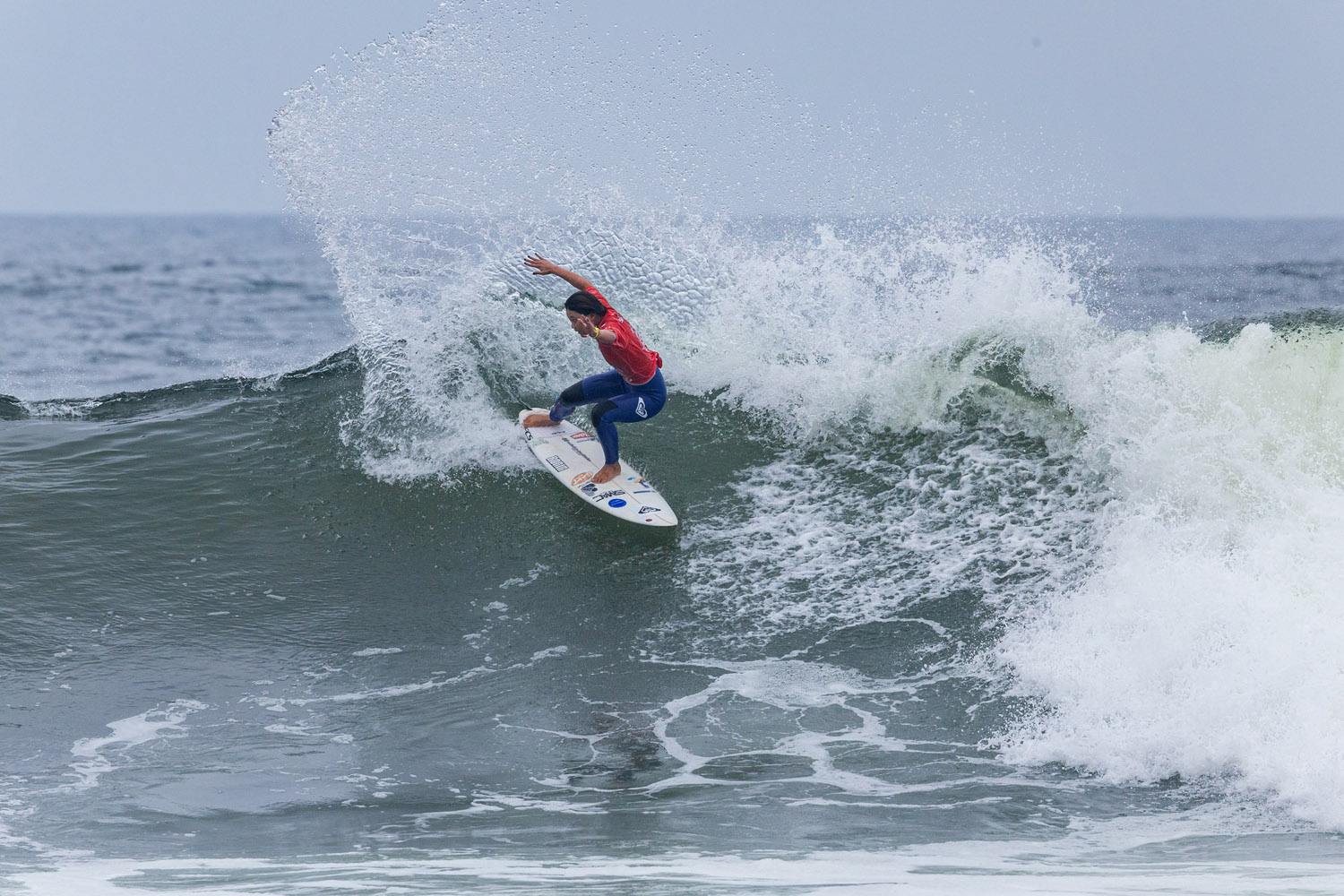
Mirai Ikeda, Team Japan. Photo: Jersson Barboza
The patient, committed approach of Mirai Ikeda (JPN) proved effective as the 2022 U/16 girls bronze medalist posted the two highest scores of the U/18 girls division, an 8.67 and an 8.17 for an excellent 16.84 heat total. Now a WSL Challenger Series competitor, Ikeda returns to ISA competition as one of the most experienced in the field, ready to return to the podium.
“I’m feeling really good,” Ikeda said. “This morning the waves were a little bit slow, but now it’s much more consistent and so much fun. I was sad the heat was only 20 minutes, I wanted to keep surfing.”
Three other former medalists progressed today — Thiago Passeri (ARG), Lanea Mons (USA), and Louise Lepront (RSA) — while Clémence Schorsch (FRA) automatically moved forward after another surfer withdrew due to injury.
Defending Team Champion Australia Opens with Strong First Round Showing
Defending team champion Australia had a great return to competition, taking wins in the first two concurrent heats of the event courtesy of Isla Huppatz (AUS) and Max McGillivray (AUS). Meanwhile, returning U/16 gold medallist Ziggy Aloha Mackenzie (AUS) drew strong forehand carves in the rights of Punta Rocas to claim the win in her first heat in U/18, posting a 7.00 and 6.83 for a 13.83 heat total.
“It’s nice to be somewhere different. El Salvador was amazing, but the waves here suit where I live,” Mackenzie said. “I’m excited to get some reps out there and excited to hopefully back myself and back up what we did last year. We’ve got an amazing team this year. Everyone gets along so well and it’s really, really cool to be a part of such a cool group of people. Everyone’s backing each other and backing themselves. It’s honestly one of the strongest teams I think I’ve seen, ever. So the team camaraderie and everything is amazing and can’t wait to keep pushing each other and ourselves.”
Caden Francis (AUS) and Ocean Lancaster (AUS) also won their respective heats, while 2024 U/18 copper medallist Milla Coco Brown (AUS) was sent to repechage needing only a 0.94 to advance. Struggling to find a wave throughout the heat, Brown needed a 5.77 with two minutes left. The 18-year-old picked up a 5.33 but ran out of time to catch anything that would provide her with even a single point. Swiss teammates Marshanda Nikijuluw (SUI) and Célia Magras (SUI) advanced together ahead of the Australian.
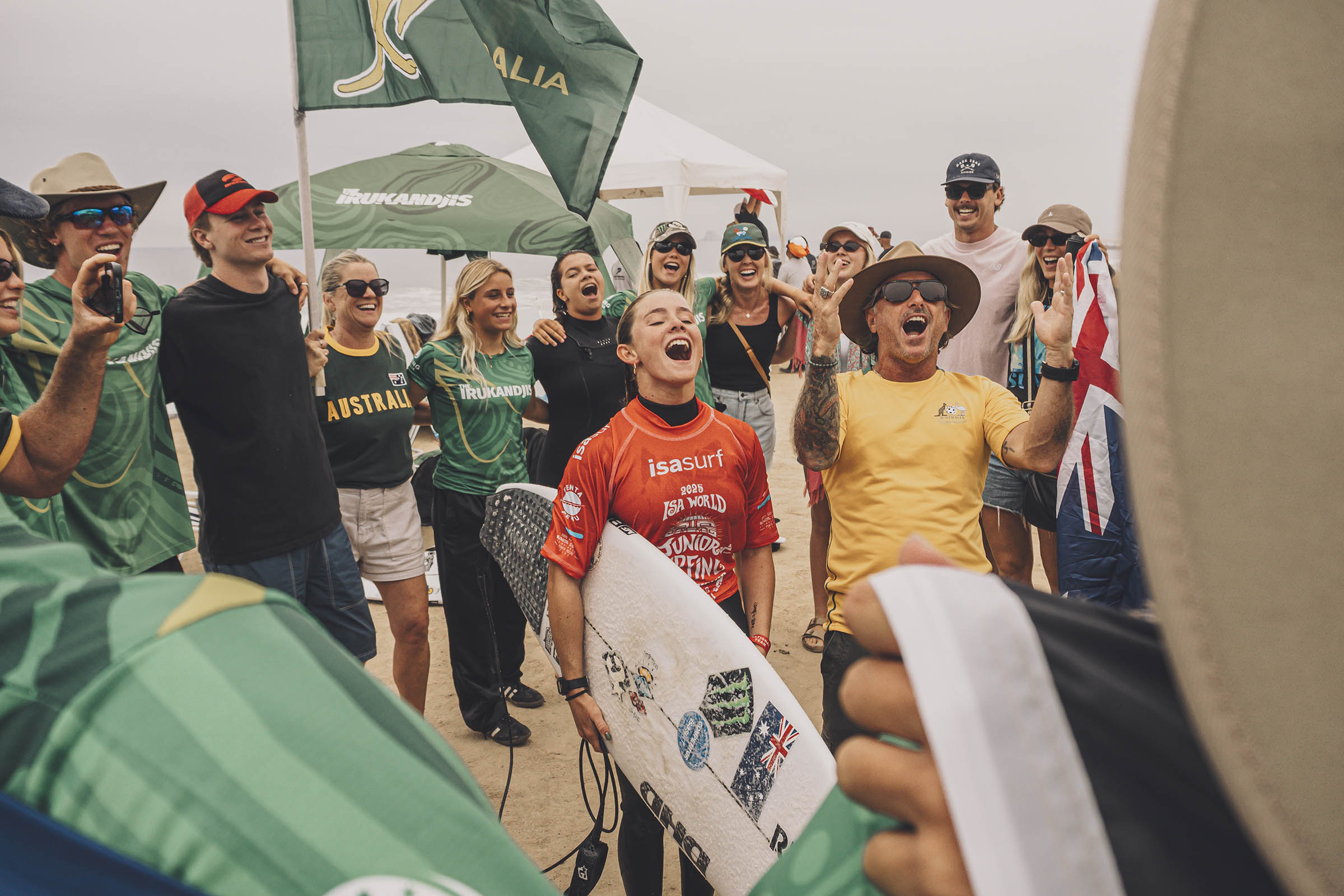
Ziggy Aloha Mackenzie, Team Australia. Photo: Pablo Franco
Pol Huguet (PER) Earns Excellence, Sets the Pace for Peru
The host nation showed that they will be a force to be reckoned with in 2025. Having topped the podium the last time they hosted the WJSC in 2011, Peru are ready to reclaim the gold. Their three girls to compete today, Urpi Torres (PER), Camila Sanday (PER), and Valentina Escudero (PER) all progressed, along with two of the three boys in the U/16 division, Luca Chipoco (PER) and Pol Huguet (PER). Huguet set the pace for the team, posting a 16.00 two wave total, the first excellent heat total of the event. The 16-year-old’s local knowledge allowed him to find a long wall to attack on his backhand, earning an 8.83 for multiple critical hits.
“I feel pretty good,” Huguet said. “I’m at my home. I learned to surf at this wave. It’s incredible to be here with my family, with my team. I’m pretty grateful. We have an incredible team, so many good surfers. I feel incredible to be part of it.”
Competition will begin tomorrow, Sunday, December 7, at 7:00 a.m. PET with the continuation of U/18 girls Main Round 1 at Punta Rocas and U/16 boys Main Round 1 at El Bosque.
Pumping Punta Rocas Delivers Powerful Performances on Day 2 of the 2025 ISA World Junior Surfing Championship
Punta Rocas, Peru – December 7, 2025, report by ISA
Solid six-to-eight-foot lines rolled into Punta Rocas to open Day 2 of the 2025 ISA World Junior Surfing Championship (WJSC), lighting up both the main peak and the inside left of El Bosque. Main Round 1 was completed in both U/18 girls and U/16 boys, with the first 22 heats of U/18 boys and 19 heats of U/16 girls also taking place.
Debuting in the U/18 girls division yesterday in her third ISA WJSC appearance, 14-year-old Miliani Simon (TAH) posted one of the highest single-wave scores of the round. Today, Simon claimed the first excellent score of the U/16 girls, an 8.00, for a critical backhand two-turn combo on a wave at least double overhead for her. Improving her placing each year so far, Simon is aiming to go much deeper in the event in 2025.
“I’m really excited to surf in Peru and do both divisions,” Simon said. “I felt really good. I was super stoked for my wave and I wanted to have a good backup score. I’m really happy to have this team. We’re all really close and we support each other.
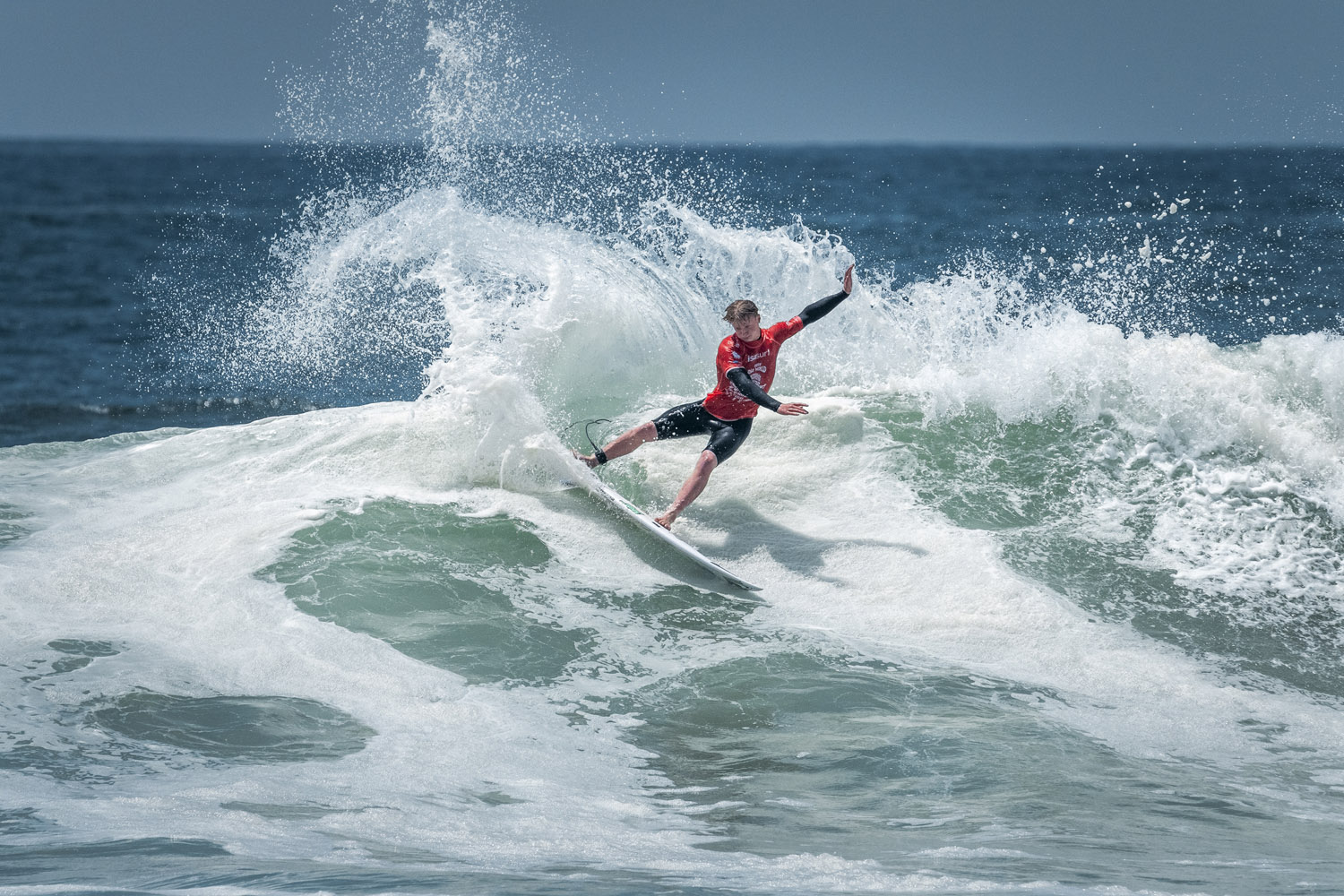
Alexis Owen, Team New Zealand. Photo: Sean Evans
Peruvian medal hopeful Catalina Zariquiey (PER) followed with a strong opening performance of her own. But the only surfer to top Simon’s scores in the round was USA’s Bailey Turner (USA), whose 14.83 heat total included the highest single-wave score for the U/16 girls, an 8.10. Though consistently placing on the podium, including taking silver in 2023, USA haven’t won the Team World Championship since 2019, a fact that Team Captain Will Deane (USA) is hoping to help change in 2025. Deane opened his third and final ISA World Junior campaign with a statement-making 16.00 excellent heat total. The North Carolinian unleashed aggressive laybacks, driving power turns, and even an alley-oop to post an 8.50 and 7.50 in one of the standout performances of the division.
“I’ve been loving the wave, I’ve been here about a week,” Deane said. “It’s definitely been tricky getting it dialled, but I feel like I’m figuring it out and I feel really good. Our team’s amazing, everyone’s been super supportive and the vibes are really good, so I’m excited to keep it going. This is my third ISA and the last two I feel like I put a lot of pressure on myself and didn’t do as good as I hoped, so this year I feel like I’m letting go. Hopefully I make it far. Our team’s amazing, everyone’s surfing really good. We’re going for gold.”
Claiming wins across the board on opening day courtesy of Avery McDonald (USA), Brody Price (USA), Lanea Mons (USA), and Makai Castle (USA), USA continued strong today. While nerves got the better of Cash Souter (USA), Kylie Pulcini (USA) and Victoria Duprat (USA) also joined Deane and Turner in claiming solid heat wins.
Momentum Builds for New Zealand as Alexis Owen (NZL) Sets the Benchmark in U/18 Boys
In 2024, Alexis Owen (NZL) became the first Kiwi boy to win an ISA World Junior medal in over 15 years when he claimed the U/16 copper. Owen kicked off his first U/18 campaign with the highest single wave score of the day, an 8.67. Sticking to the same fundamentals that brought him success in El Salvador, Owen matched power-for-power with Punta Rocas. U/18 boys remains the sole division that hasn’t seen a Kiwi on the podium, leaving Owen primed to claim a historic first for his nation.
“You always come to a comp to win, you don’t do a competition if you expect to lose,” Owen said. “I was trying to sit a bit underneath because the best ones are those mid-sized ones, and that’s what I coordinated with my coach, and it worked. That bomb, the 8.67, came straight to me and I surfed it good, so I was stoked. To be honest, when I was coming to Peru, I thought it was going to be like El Salvador, a real tropical, interesting place, but it’s so sick. It’s just dry, but the waves are so pumping, perfect point breaks, non-stop waves, all you can ask for.”
Following the progression of Leia Millar (NZL) and Vitor Bauermann (NZL) in concurrent heats yesterday, Lola Groube (NZL) earned one of the highest heat totals of U/18 girls to move into Main Round 2 along with her older sister, Chloe Groube (NZL), from the same heat. Meanwhile, Benji Lowen (NZL) and Luca Thompson (NZL) also advanced together in boys U/16. In the final heat of the day, Alani Morse (NZL) and Poppy Arkle (NZL) secured a position in Main Round 2 alongside Brisa Canina (NZL).
Eeli Timperi (FIN) Opens Final WJSC Appearance in Commanding Form
In 2022, Eeli Timperi (FIN) and Lukas McMahon (FIN) made up the first-ever Finnish team to compete in the WJSC, while Timperi appeared as the sole representative for his nation’s debut in that year’s World Surfing Games as a 15-year-old. Now 18, Timperi has steadily built on his results across the six ISA events he has competed in, but today delivered his finest performance yet as he appears in his final WJSC. Opening with an excellent 8.50, Timperi quickly added a 7.83 to hold a 16.33 heat total, the highest of the division so far, leaving his fellow three competitors, including new teammate Joakim Bjorck (FIN), in combination.
“I was able to find the first good one and then lucked into a good second one right after. It stood up for me, and I was stoked to show my surfing,” Timperi said. “I’ve been doing these ISAs for a long time now, not my first time here, that’s for sure. I’m happy I was able to keep it going and keep the pressure off today. This event is so special to me and to everyone who surfs here. If you have the opportunity to surf in these events, I would definitely give it a go. It’s like no other.”
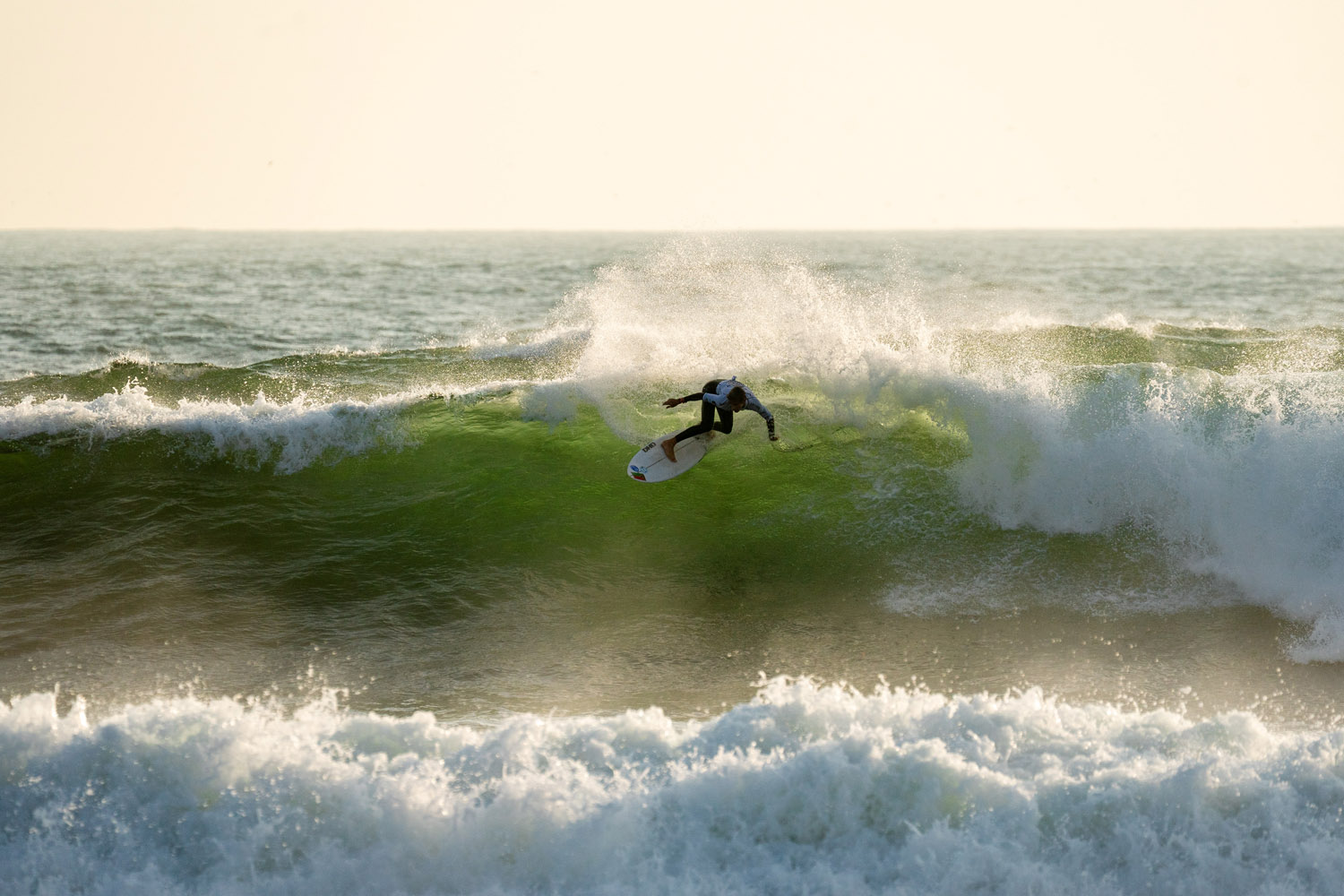
Manoa Tarroux, Team Vanuatu. Photo: Pablo Jimenez
Manoa Tarroux (VAN) Claims Historic First ISA Heat Win for Vanuatu
In the final heat of the day, Vanuatu’s Manoa Tarroux (VAN) claimed a historic first-ever ISA heat win for his nation. Encouraged by the ISA Oceania Youth Development Program held in Fiji earlier this year, the South Pacific island nation made their World Surfing Games debut in September, where Tarroux also competed. Having also progressed in the U/16 division, the 16-year-old was excited to keep the ball rolling as he turned heads in Peru.
“I’m very happy to win,” Tarroux said. “It’s a lot of training and work to do this competition, so I’m very happy it pays off and to be here in Peru representing Vanuatu. Our waves in Vanuatu are really sick, mostly reefs, really slabby, long rides and close to the shore, so you can surf every day, especially in summer when it’s always glassy. I think it’s just about getting some money in Vanuatu to have boards for the Vanuatu Surfing Association. I hope we can get more boards so people who don’t have much money can surf every day and continue working on this.”
Competition will continue tomorrow, Monday, December 8, at 7:00 a.m. PET with the continuation of U/18 boys Main Round 1 at Punta Rocas and U/16 girls Main Round 1 at El Bosque.
Momentum Builds as Eliminations Begin on Day 3 of the 2025 ISA World Junior Surfing Championship
Punta Rocas, Peru – December 8, 2025, report by ISA
Swell continued to pour into Punta Rocas for Day 3 of the 2025 ISA World Junior Surfing Championship (WJSC). Consistent six-foot lines were joined by the occasional solid eight-foot set, providing the world’s best junior surfers with a large open-face canvas at both the main peak and inside left at El Bosque.
With the completion of Main Round 1 in U/18 boys and U/16 girls, repechage rounds began, seeing the first eliminations of the competition. Due to the size of the field, only a single round of repechage will take place for each division. This guarantees at least two heats for every surfer in the event but determines that every heat moving forward will result in direct elimination for those who don’t advance.
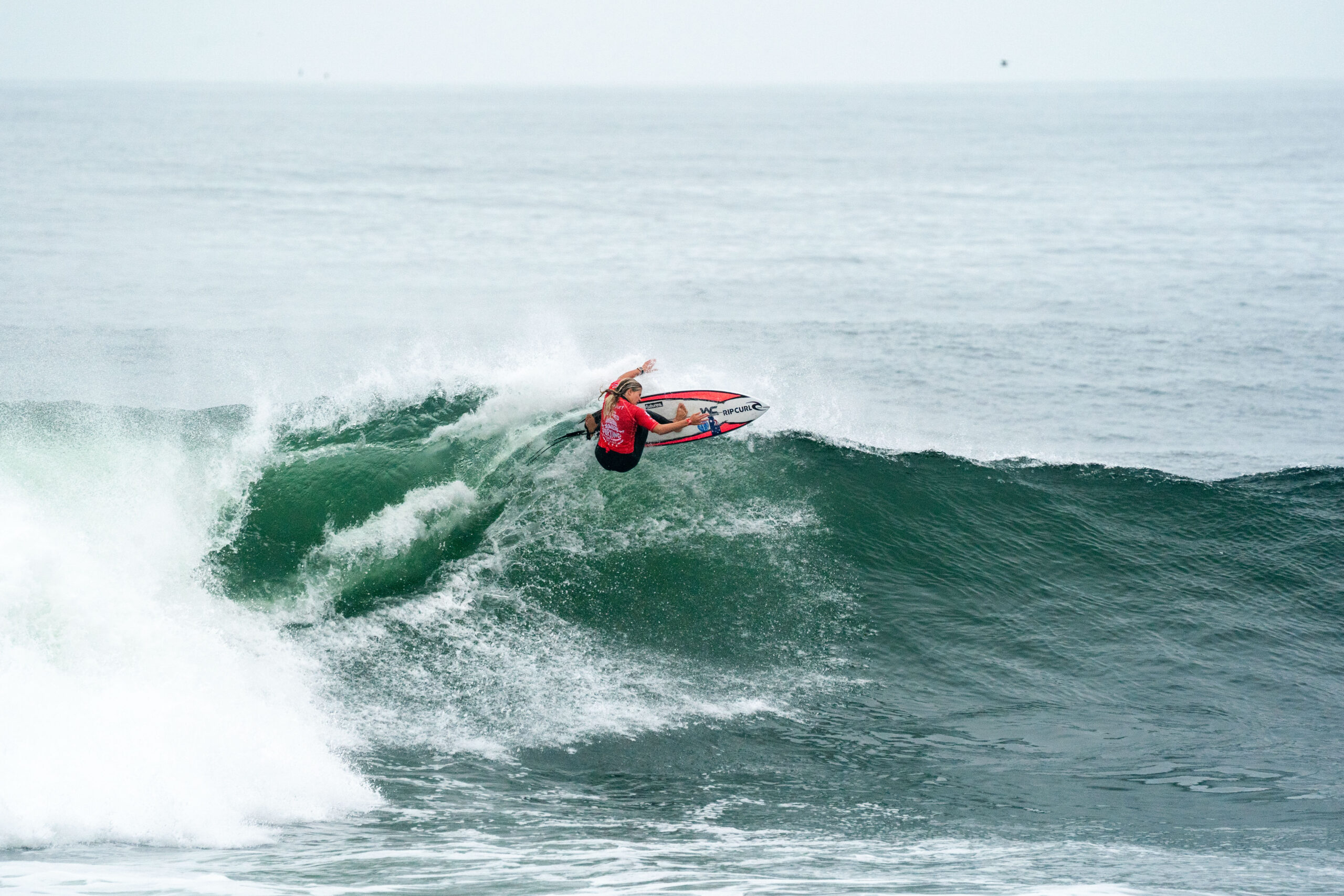
Lucy Darragh, Team Australia. Photo: Pablo Jimenez
Relishing the opportunity to attack the powerful lefts of El Bosque on her forehand, Lucy Darragh (AUS) closed out her first-ever ISA heat with a 9.00, the highest single-wave score of the opening round of U/16 girls, contributing to the round’s top heat total of 15.50. Currently leading the hotly contested WSL Qualifying Series rankings for Australia/Oceania after winning two major QS 6000 events already this year, the 15-year-old is experiencing a breakthrough season in 2025 and is excited to keep that momentum going in Peru.
“The waves are absolutely pumping today. You couldn’t really ask for better waves, so really stoked on that,” Darragh said. “There was a lot of build-up to the first heat, a lot of nerves. So I’m really happy to get that one out of the way. It’s been such good waves. Yesterday and today, it’s been six-foot-plus, pumping left and right. It’s such an honor to be part of Team Australia. Everyone has got such good team spirit. Everyone’s so supportive, down here for every single heat, you know, ring of fire. So honored to be part of the team.”
Darragh’s victory followed strong performances in the same division from Charli Hately (AUS) and Olive Hardy (AUS) on day two of competition. Meanwhile, the sole Australian representative in repechage, Team Captain Milla Coco Brown (AUS), found her feet to return into the main event.
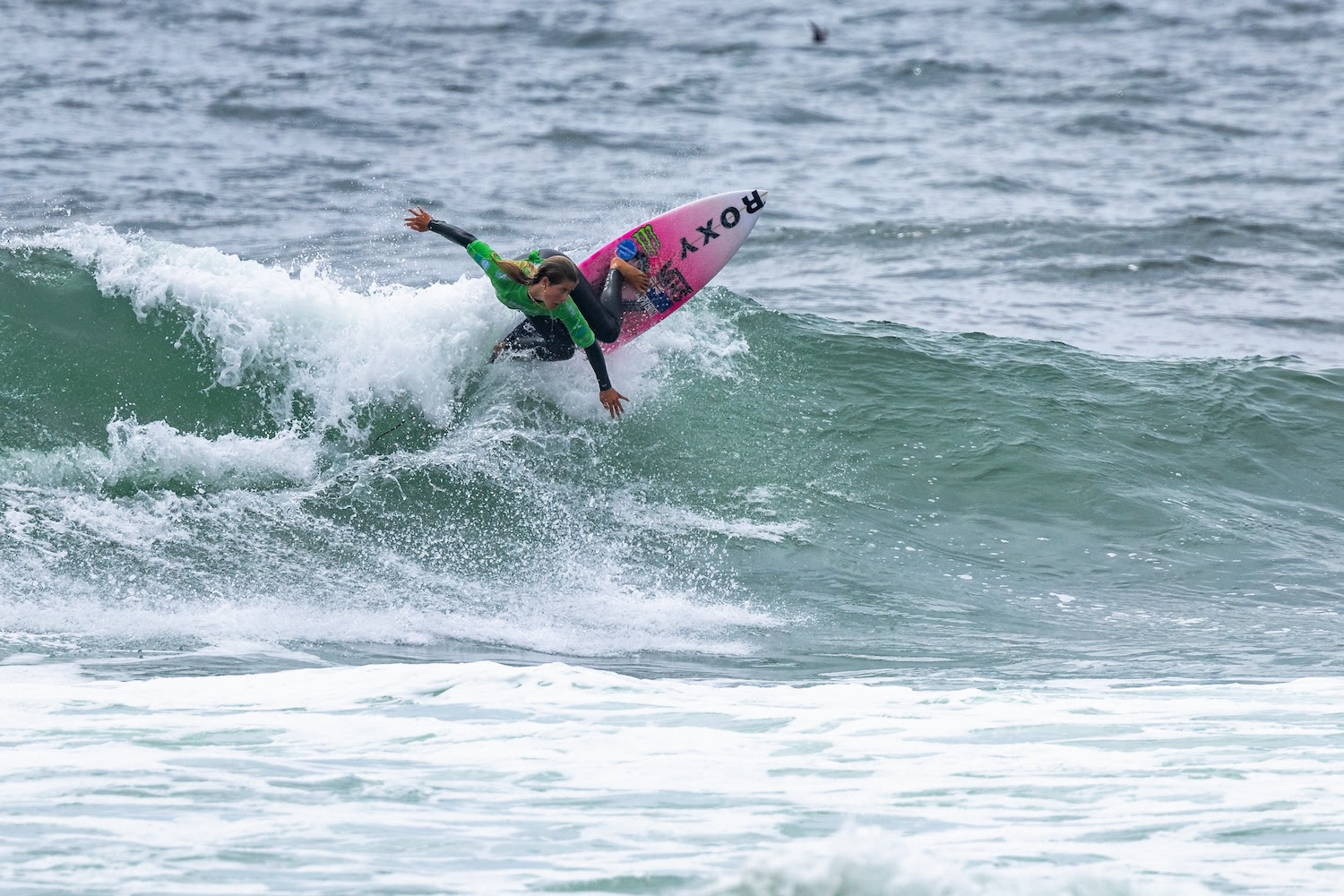
Milla Coco Brown, Team Australia. Photo: Jersson Barboza
Michael Monteiro (ITA) Rebounds in Repechage With Standout Performance
After losing out in the very first heat of the event, Michael Monteiro (ITA) bounced back in the opening heat of U/16 boys Repechage Round 1. Born and raised between Cape Verde, Italy, and Brazil, Monteiro is a true citizen of the world, already speaking five languages fluently. The tall 13-year-old showcased impressive speed management as he delivered mature top-to-bottom backhand surfing on the right of Punta Rocas, earning a 9.33, the highest single-wave score of the event so far.
“I was pretty comfortable on that wave and confident,” Monteiro said. “I caught a good one and I just did my best. On my first wave I fell, so I was feeling the pressure a little bit, but then I found another good one and after that score I felt more relaxed and I was so happy.”
Home-Soil Determination Sees Bastián Arevalo (PER) Battle Back Into the Main Draw
The only Peruvian to have fallen into repechage, Bastián Arevalo (PER), put on a dominant display at his favorite wave to show that he is not going to go down without a fight. Arevalo posted an excellent 8.00 for solid down-the-line surfing on a long Punta Rocas wall. The 15-year-old backed up that performance with the most progressive maneuver of the event so far, earning a 6.00 for a clean execution of a club sandwich. Arevalo’s 14.00 heat total held as the highest of the U/16 boys repechage.
“Yesterday I fell into a repechage heat, but I am super happy to have shown my surfing and get back into the main event,” Arevalo said. “This is a really fun wave, this is my hometown, and I am really happy to have a new opportunity tomorrow. We are a super united team with lots of chemistry, and we are also a really big team with lots of Peruvians supporting us, so it’s really emotional and hopefully I can pass a couple more heats and have a good result here.”
South African-Refined Backhand Delivers Strong Start for Levi Epenetos (GRE) at Punta Rocas
Utilising a backhand approach honed on the right points of South Africa, Levi Epenetos (GRE) attacked a long Punta Rocas wall, his critical hits earning an 8.27. A Cape Town resident and former Rainbow Nation representative at the WJSC, Epenetos is enjoying embracing his Greek heritage, along with his younger brother Zach Epenetos (GRE), who is appearing in his first ISA event.
“This wave is so sick for the goofies, such a good opportunity to just go vert,” Epenetes said. “The waves are so good. I’m so stoked to open up with a great first heat, and the 8-point ride is such a gift. So stoked, board’s feeling good, everything’s going great. Greece has been such a cool team to be a part of. I’m so grateful for this opportunity from God. This morning it was unreal. It was cranking and it felt like a little bit of J-Bay and I was hooking it on the backhand. It was dreamy, it was so fun. Definitely coming from South Africa, there’s so many rights. It’s such an advantage understanding the mechanics of the wave, and it’s so fun and great to be South African, representing Greece, and bringing my surfing to the table.”
Competition will resume tomorrow, Tuesday, December 9, at 7:00 a.m. PET with U/16 boys Main Round 2 at Punta Rocas and the continuation of U/18 boys Repechage Round 1 at El Bosque.
Buzzer-Beaters Highlight Exciting Day 4 of the 2025 ISA World Junior Surfing Championship
Punta Rocas, Peru – December 9, 2025, report by ISA
Multiple heats went down to the wire as excellent conditions continued into Day 4 of the 2025 ISA World Junior Surfing Championship (WJSC). Four-to-six-feet of swell lined the peak of Punta Rocas and provided long lefts at El Bosque. Main Round 2 was completed in U/16 boys at Punta Rocas, along with U/16 girls Repechage Round 1, while the first 18 heats of U/18 girls followed the completion of U/18 boys Repechage Round 1 at El Bosque.
Sixteen nations started the day with full teams intact. By day’s end, that number had been whittled down to four. As the teams race starts to shape up, the host nation of Peru is joined by Brazil, Portugal, and the USA on top of the leaderboard. In U/16 boys, Pol Huguet (PER) delivered his second standout moment of the event with a buzzer-beater sending the Punta Rocas local from fourth to first. After redeeming himself in repechage, Bastián Arevalo (PER) claimed a solid heat win. Urpi Torres (PER) accomplished the same in U/18 girls, with Camila Sanday (PER) also progressing through the same round.
In the 18 months since Thiago Passeri (ARG) claimed the U/16 boys bronze medal in the 2024 WJSC. Today, Passeri’s critical approach to the lip at Punta Rocas earned a division-topping 16.16 heat total that included the highest single-wave score, a 9.33. The son of team coach and World Surfing Games veteran Martin Passeri, Thiago is already appearing in his fourth WJSC, ready to once again go the distance to the Final.
“I’m feeling great being here with all my teammates and my family, my sister, my dad. It’s amazing,” Passeri said. “Finally, I got to surf Punta Rocas. Today was an amazing day for all the team, not just for me. I’m starting to get into the rhythm of the competition. I’ve come here to Peru a lot of times in my life, I always get to surf here in Punta Roca, so this week before the event, I just dedicated my time to El Bosque because it’s a pretty hard wave, but I’m just happy. The energy that all the team is vibing, it’s amazing. I feel great.”
Passeri’s teammate Facundo Ruggiero (ARG) set the high mark of the morning with an 8.17, while Tahiel Sosa (ARG) also progressed through his heat. Though losing the two U/18 girls to surf today, Ayla Daian (ARG) and Albertina Torre (ARG), Argentina retains each of their surfers in U/18 boys and U/16 girls as they look to earn their first WJSC team medal.
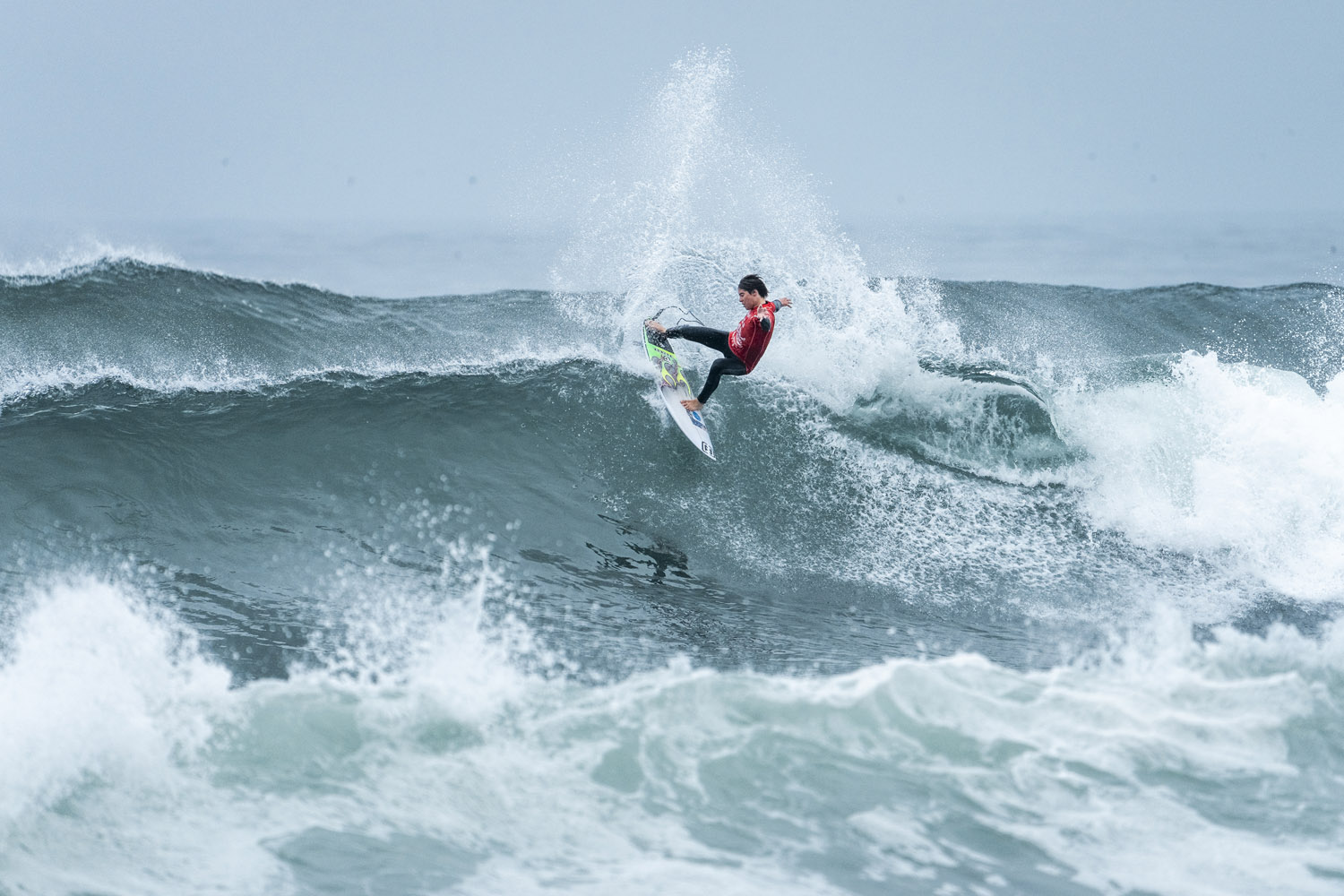
Australia's Max McGillivray. Photo: Sean Evans
Goofy-footers Ocea Green (CAN), Clémence Schorsch (FRA), and Lanea Mons (USA) Thrive at El Bosque
The majority of high scores in U/18 girls came from goofy-footers. Ocea Green (CAN) topped a list that included former medallists Clémence Schorsch (FRA) and Lanea Mons (USA). Green drove through multiple aggressive forehand turns into a strong finish to post a 7.60 as the high mark of her Main Round 2 heat win. Having placed just outside the Final in U/16 girls for two years running, the 16-year-old is enjoying another opportunity to represent her country as she aims for her first medal.
“It’s the dream to come to a left,” Green said. “I feel like lots of comp waves are all at rights, so coming to the left is like the best thing ever. It feels really good, especially to get a wave like that in a contest. I feel like you get those in the free-surfs and then a contest happens and there’s nerves and pressure and everything, so it was good to get that. I love team events. It’s definitely my favourite because everyone’s so supportive. Everyone’s cheering on the beach for everybody’s heat and it’s just so awesome.”
The U/16 silver medallists in respective years, Mons (2023) and Schorsch (2024) both delivered big forehand hits of their own to also earn rides in the 7-point range. Despite moving up a division for 2025, Mons carries confidence from her past WJSC experiences.
“It’s such a big event, so of course it’s always a little nervous to get your first heats going,” Mons said. “The first year I did this, I made the Final and got the silver medal, so I’m definitely going to have full confidence from that because it’s not easy to do. It’s a lot of heats, but knowing that I can push through those heats and slowly climb my way through a super-stacked field definitely brings a little confidence, and of course I’m so stoked to be back.”
Two other finalists from 2024, Gold Medallist Ziggy Mackenzie (AUS) and Bronze Medallist Louise Lepront (RSA) bowed out of competition today. While Lepront was eliminated, Mackenzie was forced to withdraw due to an MCL injury. As the only ISA World Junior Champion in the women’s draw, Mackenzie’s exit guarantees new winners in both girls divisions.
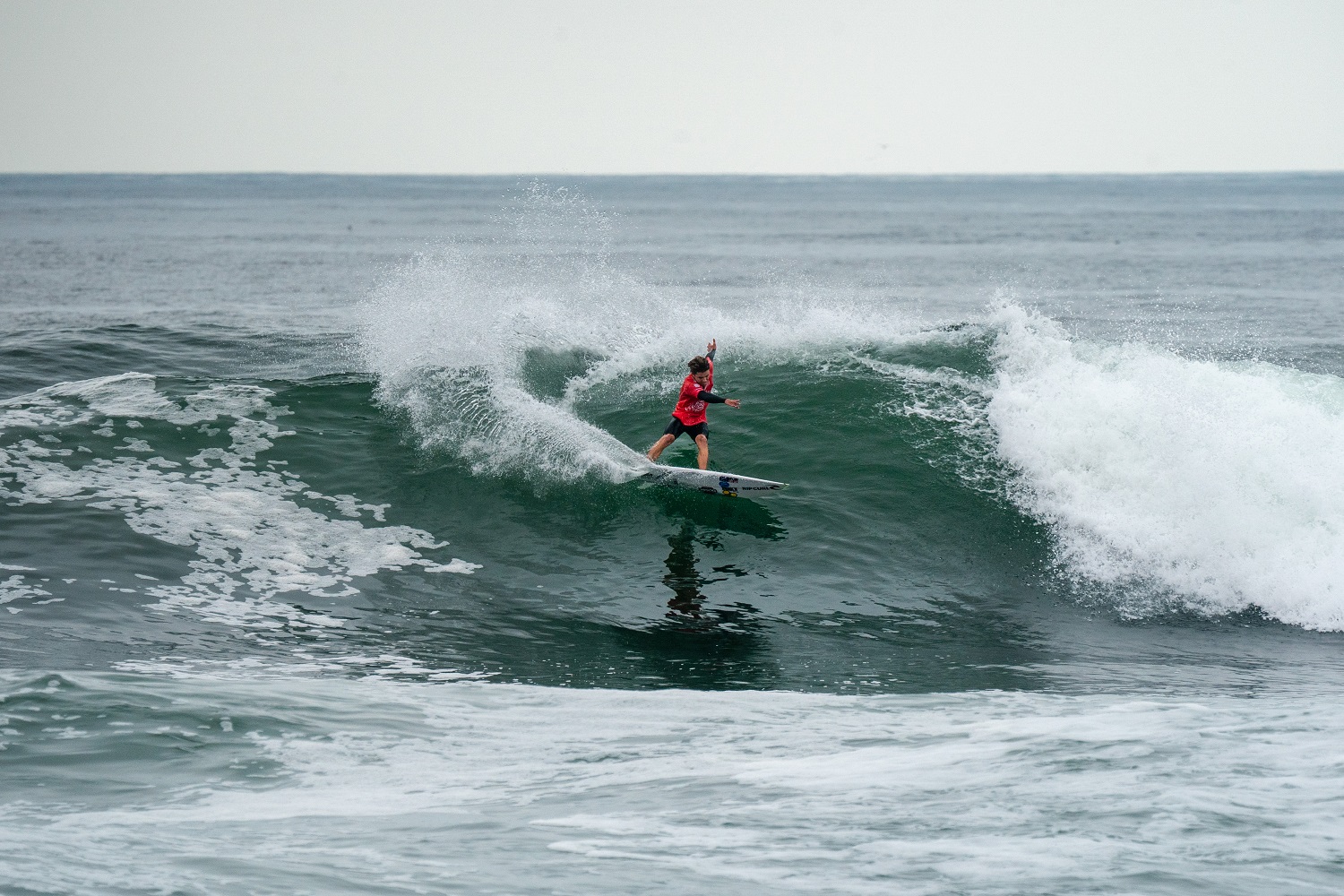
Ocean Lancaster, Team Australia. Photo: Pablo Jimenez
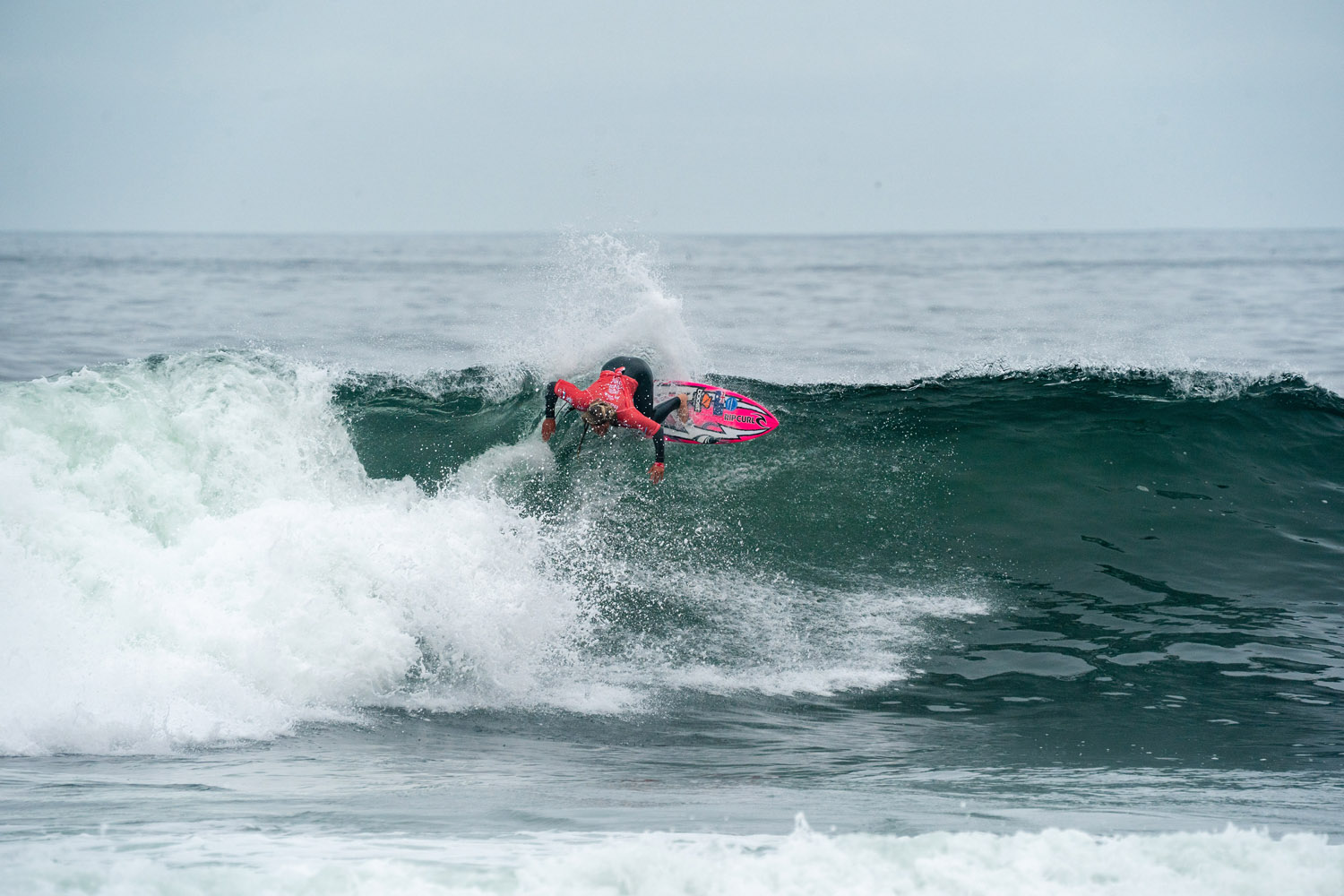
Isla Huppatz, Team Australia. Photo: Pablo Jimenez
With Seconds Remaining, Ocean Lancaster (AUS) and Aditya Somiya (INA) Flip the Script
On a day filled with buzzer-beaters, none was quite as intense as Heat 20 of U/16 boys, which finished with a near-total flip in placings. Having sat for over half the heat without catching a single wave, Ocean Lancaster (AUS) delivered a masterclass of precision on a long Punta Rocas right to earn an 8.50. Falling off his second wave with barely 30 seconds left, Lancaster scratched into the only wave he could catch. Having previously only needed a 0.37 to advance, the Australian knew he would need more. With Luca Thompson (NZL) in the lead, Lancaster sitting in second and Aditya Somiya (INA) sitting in third, the Indonesian took off with five seconds on the clock. When the final scores arrived, Lancaster had done enough to take the lead, Somiya had also improved to take second just 0.07 ahead of Thompson, who was eliminated alongside Kamiel Deraeve (BEL). Having come within striking distance of the Final in 2024, Lancaster was extremely relieved to keep his campaign alive.
“I’m actually lost for words from that heat,” Lancaster said. “I went out there and I was so hyped. I was watching all the heats leading up to it, and there were just so many good-looking waves. I was like, alright, I’m just going to go out there and give it my best and catch a bunch of waves and got out there and sat for the first half of the heat. And then I got that one, and it was such a good wave. And I was like, alright, I’ve got eight minutes, I should be able to find one in the next eight minutes and get a backup. And then just paddled from left to right trying to find something, and nothing came to me. At the end, I took off on one and my foot slipped on my first turn and I was like, ‘Oh my god, is this it? Am I gone?’ And then I managed to scratch into one that didn’t even look like a wave and somehow pulled off one turn on it and got the job done. It was crazy.”
Competition will resume tomorrow, Wednesday, December 10, at 7:00 a.m. PET with U/18 boys Main Round 2 at Punta Rocas and the continuation of U/18 girls Main Round 2 at El Bosque.
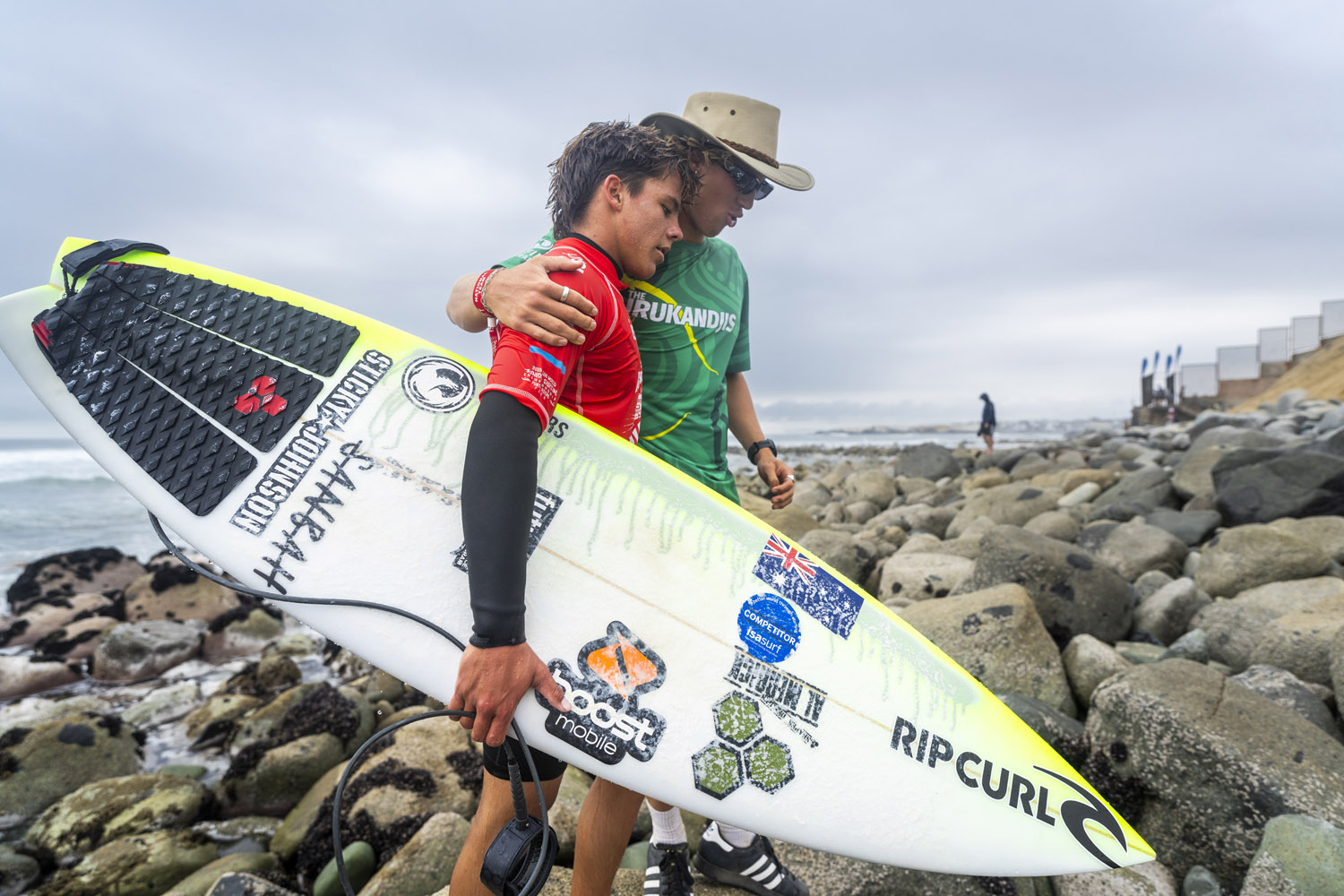
Ocean Lancaster, Team Australia, with co-Captain Samuel Lowe. Photo: Sean Evans
Powerful Performances Continue on Day 5 of the 2025 ISA World Junior Surfing Championship
Punta Rocas, Peru – December 10, 2025, report by ISA
Day 5 of the 2025 ISA World Junior Surfing Championship (WJSC) saw the world’s best junior surfers light up three-to-four-foot peaks at Punta Rocas, where U/18 boys Main Round 2 was completed, while further inside, competitors attacked the long lefts of El Bosque for the remainder of U/18 girls Main Round 2 and the first 21 heats of U/16 girls Main Round 2.
With just three heats left to complete Main Round 2 in all divisions, the list of nations retaining full teams was further refined. Brazil, Peru, and the USA move forward as equal-first on the rankings, followed by Portugal, Australia, and France. Catalina Zariquiey (PER) once again delivered a highlight performance for the host nation, posting the highest single-wave score of her division, a 9.00.
Australians Milla Coco Brown and Isla Huppatz both placed first in their Round 2 heats, with Isla scoring one of the highest combined wave totals for the day.
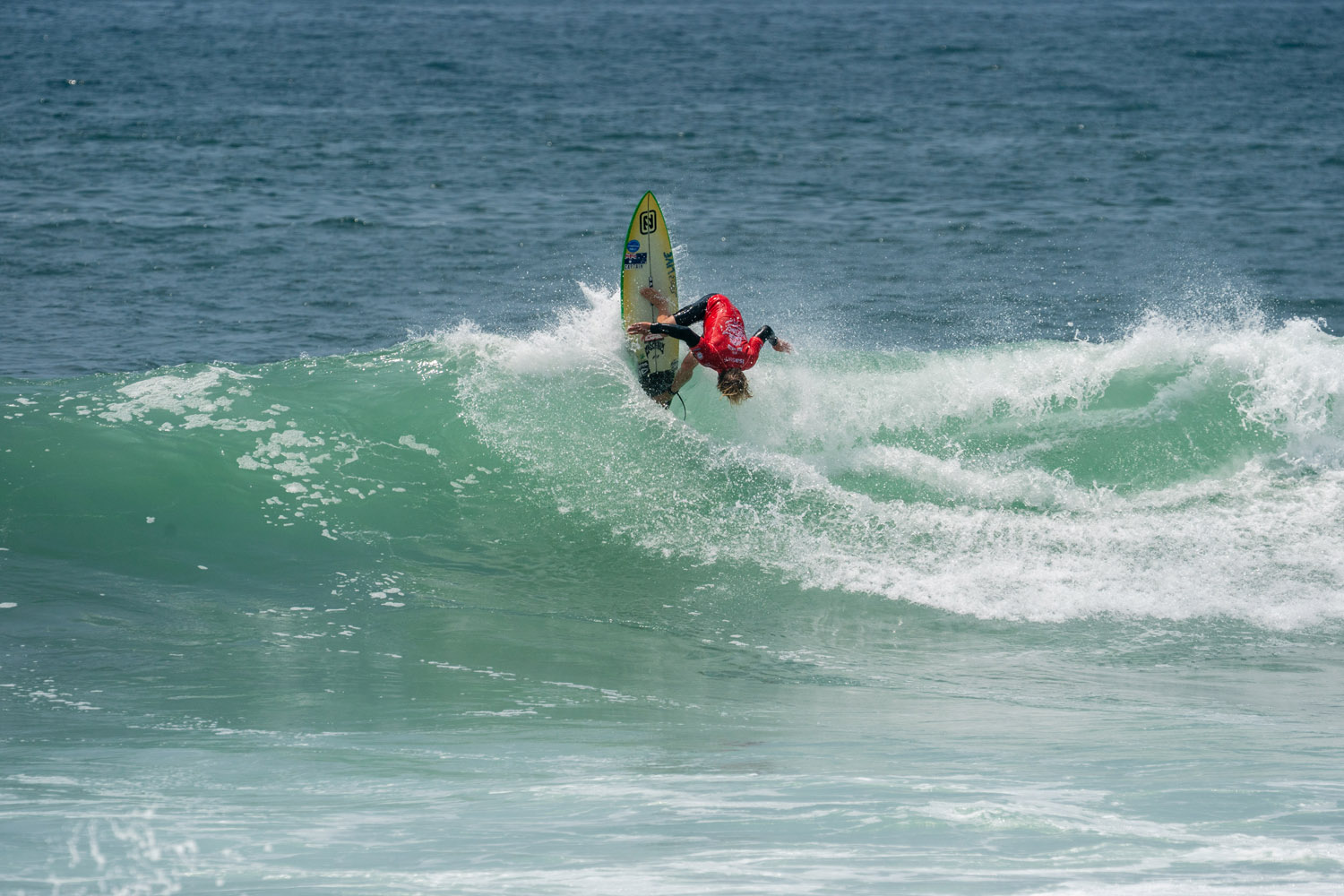
Samuel Lowe, Team Australia. Photo: Pablo Jimenez
Leah Turner (HAW) and Charli Hately (AUS) Go Blow-for-Blow in High-Intensity Matchup
A battle between two explosive goofty-footers played out at El Bosque when Leah Turner (HAW) and Charli Hately (AUS) went blow-for-blow in U/16 girls Main Round 2. Turner built strong early, posting a 6.00 and 7.50 to maintain heat control. Meanwhile, Hately struggled to break out of the 4-point range, before finding a long open face to unleash her strong open face carves and post an 8.83. Turner wasn’t finished however, improving her back-up score to reclaim the lead that Hately had taken and secure the heat win.
“That was so fun, surfing lefts,” Turner said. “I’m so excited to surf left, on the front side, just getting used to the new board and having fun out there. It’s really different than a normal contest. I feel less pressure for some reason, and supporting the whole team and having the whole team support me, it’s a great experience. When everyone goes out, I’m biting my nails, hoping that they can make it through.”
Turner’s older brother, Jacob Turner (HAW), also progressed through his heat. Competing in their first ISA event, the Kauaian siblings will be joined in Main Round 3 by teammates Legend Chandler (HAW), Tiger Abubo (HAW), Manalani Cazimero (HAW), Kalei Rivas (HAW), Kahanu Rangel (HAW), Elliamna Grubbs (HAW), and Zoey Kaina (HAW).
Yet another goofy-footer to deliver a standout performance at El Bosque, Kaina posted the equal-highest heat total of U/16 girls Main Round 2. The 15-year-old’s 14.50 two-wave total included an 8.33 earned from her stylish and critical forehand hits.
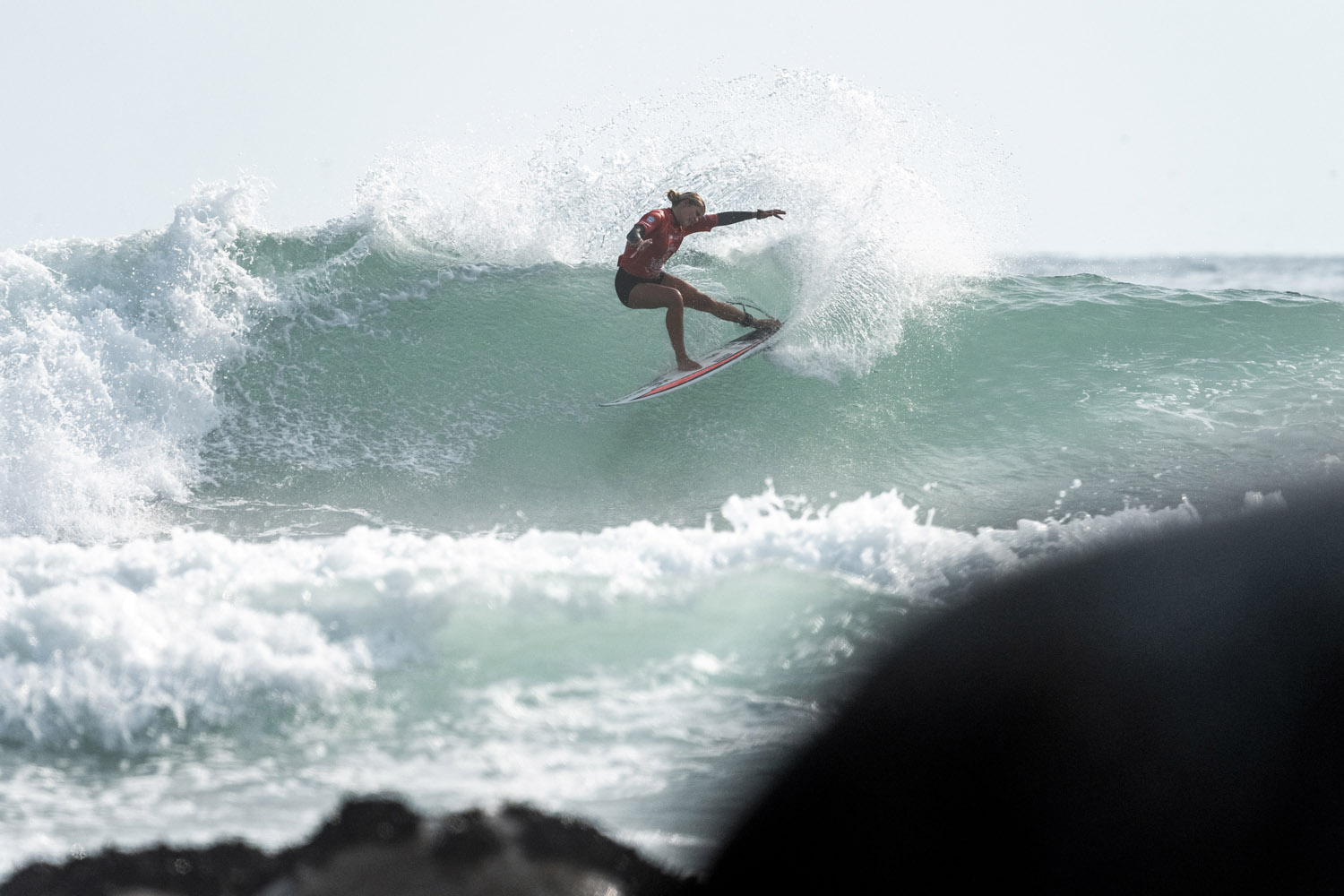
Lucy Darragh, Team Australia. Photo: Sean Evans
Continuing a Powerful Goofty-Footed Legacy, Samuel Lowe (AUS) Sets the Bar in U/18 Boys
One of many second generation pro surfers competing in Peru, Samuel Lowe (AUS) closed out his U/18 boys Main Round 2 heat with an excellent 8.00, his second of the event. Building across each of his four waves, Lowe moved up the placings behind local Peruvian Adrian de Osma (PER) before delivering a masterclass in power and flow on his backhand to steal the win in the last 20 seconds. The son of former WSL Championship Tour stalwart Mick Lowe (AUS), who won the World Grommet Titles in 1993, Samuel has carried the powerful goofy-footed legacy of his father into a solid junior career of his own. Competing in his first ISA event, Lowe has been named Captain of the defending Team World Champion alongside Milla Coco Brown (AUS).
“The word that’s been going around our camp has been awareness. I just felt super aware out there and in tune with the waves and the sets, so feeling good over here,” Lowe said. “Australia, we just have so much presence already coming from back-to-back, or hopefully back-to-back champions, but winning last year. So being named Captain for my country has been so sick. You can sort of stay sheltered in your own country and think you’re the best when you come over to these world games. It’s so eye-opening to see the talent around the world and the things you have to be doing to be at the top of your game.”
Siqi Yang (CHN) Delivers Standout Performances Across Two Divisions
Though still only 16, Siqi Yang (CHN) is already appearing in her eighth ISA event between the WJSC and World Surfing Games. Yang is the first Chinese surfer to compete in the Olympic Games, and also the youngest surfer so far to appear in the Olympics. She is also the first current Olympian to compete in the WJSC. Despite increasingly good results, Yang is yet to win an ISA medal, a feat that would be yet another first for her nation. Today, Yang posted the only excellent score of U/18 girls Main Round 2, an 8.00, before her powerful backhand assault at El Bosque also earned a 7.83 in her U/16 girls heat.
“Today the waves are very good and my 8-point wave was so good,” Yang said. “It’s powerful. I prefer power surfing and clean surfing, it’s so good. This event has been really fun. The waves were a mix of forehand and backhand, and it’s very clean. I’m keen to do even better in tomorrow’s heat.”
Competition will resume tomorrow, Thursday, December 11, at 7:00 a.m. PET with U/18 girls Main Round 3 at Punta Rocas and the continuation of U/16 girls Main Round 2 at El Bosque.
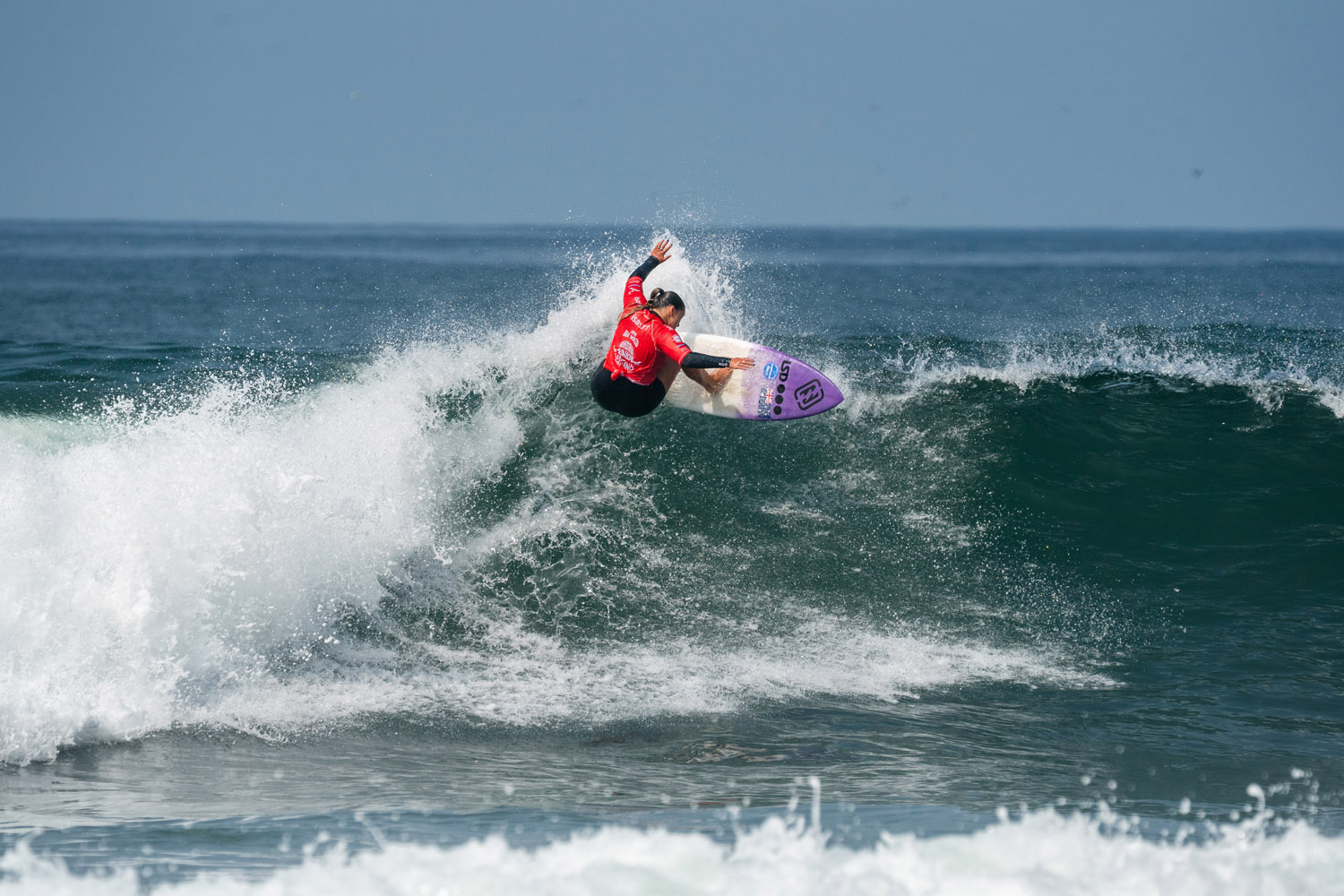
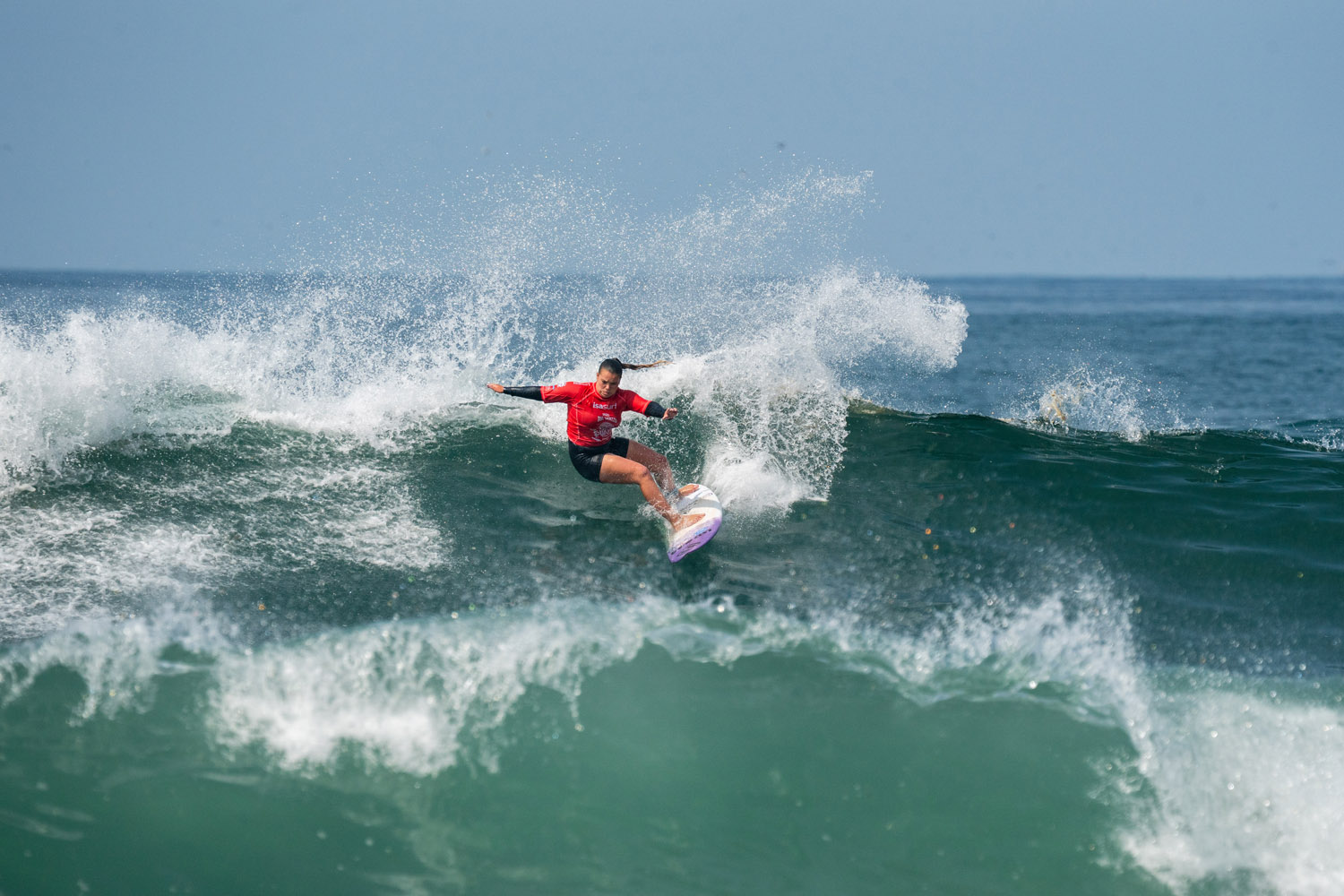
Charli Hately, Team Australia. Photos: Pablo Jimenez
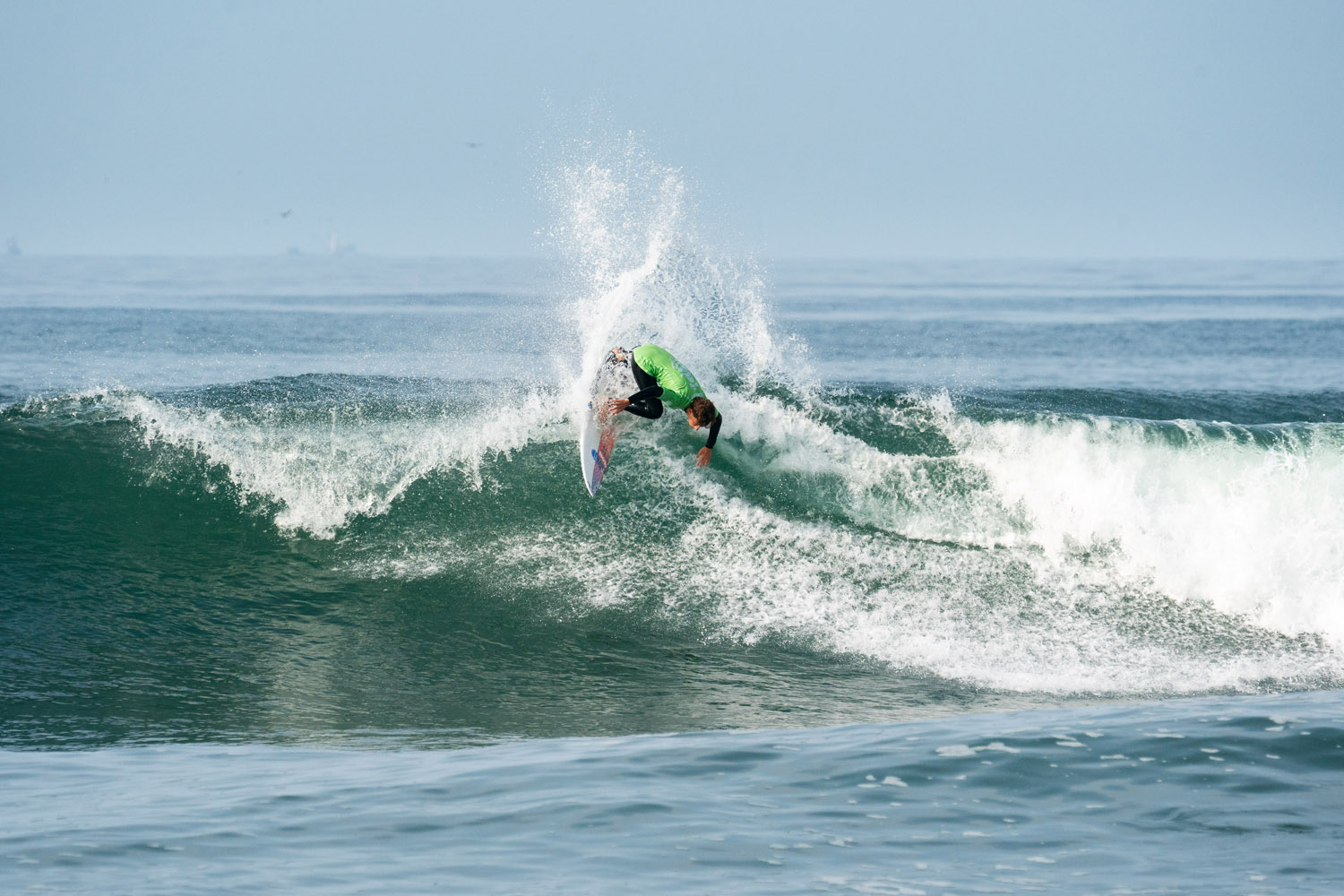
Maverick Wilson, Team Australia. Photo: Sean Evans
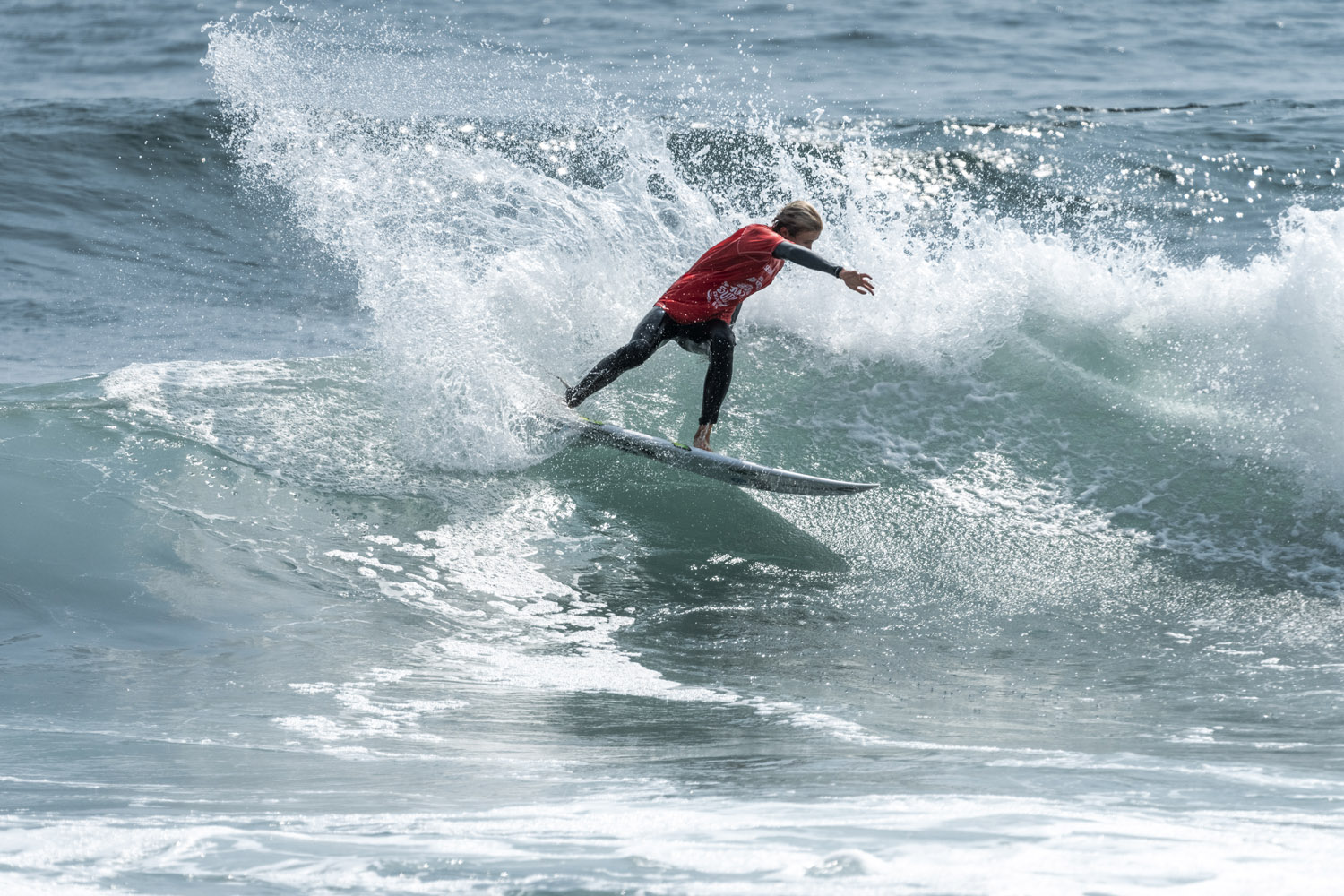
Mitchell Peterson, Team Australia. Photo: Pablo Jimenez
Team Race Brings Drama to Day 6 of the 2025 ISA World Junior Surfing Championship
Punta Rocas, Peru – December 11, 2025, report by ISA
A huge day of action at the 2025 ISA World Junior Surfing Championship (WJSC) saw team dynamics come into play in a major way. Three-to-four-foot swell at the peak of Punta Rocas and left of El Bosque again set the stage for the world’s best junior surfers to perform.
With Main Round 3 completed across three divisions, the broader team picture came into focus. Brazil broke away in the rankings ahead of Australia, USA, Peru, and Japan. The two most recent Team World Champions, Brazil (2023) and Australia (2024), each remain down only one surfer, though the defending champions have technically not had anyone eliminated yet, as their numbers dropped solely due to an injury withdrawal from returning U/16 Gold Medallist Ziggy Aloha Mackenzie (AUS).
The host nation of Peru may have lost a quarter of their team today, but they also saw multiple strong performances, highlighted in the last minute of the final heat by Brianna Barthelmess (PER). Finding an inside track on a long Punta Rocas right, Barthelmess delivered a vertical backhand two-turn combination that resulted in a 9.00, drawing effusive cheers from the home crowd.
“I’m really happy to have gotten in that last wave because I had two good ones, but I really wanted to show how I surf,” Barthelmess said. “I’m really happy I get to surf World Juniors at my home. I surf this wave almost every day. So yeah, really stoked to have all this support here.”
Thrilling Finish Sees Aysha Ratto (BRA) Join Maria Eduarda (BRA) in Keeping Team Brazil on Top
Following a convincing heat win from Luara Mandelli (BRA) in U/18 Girls Main Round 3, an important heat in the teams race went right down to the wire with her Brazilian teammates. With two Portuguese and two Brazilians in the match-up, Aysha Ratto (BRA) and Maria Eduarda (BRA) split the peak on their opening exchange, each sticking to her forehand. Eduarda picked up a 6.00 from the right, while Ratto posted a 4.33 from the left. On the strength of two mid-range scores, Teresa Pereira (POR) briefly moved into the lead before Eduarda reclaimed it. Lua Escudeiro (POR) continued to build, advancing into second and leaving Ratto in fourth. With less than two minutes remaining, Ratto finally found a wave that let her unleash her backhand on a long wall. The resulting 8.50 moved her straight into first, ahead of Eduarda, and allowed both Brazilians to advance together into Main Round 4.
“I’m very happy, that was very much God’s work,” Ratto said. “I’ve been talking to him a lot, so everything went well, thank God. Brazil got a double win, I’m very happy for Maria [Eduarda], my teammate and friend.”
“It was a difficult heat, the waves are pretty small and a little bit slow, but I’m really happy,” Eduarda said. “I don’t have words to describe what I’m feeling right now. Aysha [Ratto] is one of my best friends, so I’m really happy. I just want to enjoy all this moment.”
Though Team Brazil did lose their first member when Maria Clara (BRA) was knocked out of a tightly contested U/16 girls heat, Meava Guastalla (BRA) narrowly avoided elimination in the same round. Earlier, Carol Bastides (BRA) took the win in a heat that saw New Zealand teammates Alani Morse (NZL) and Poppy Arkle (NZL) separated, with Arkle bowing out.
In a similar scenario for Team USA’s U/18 girls, Sol Borelli (ESP) played spoiler, advancing ahead of Avery Macdonald (USA) and eliminating Kylie Pulcini (USA), the first of the US team to lose out. A second split happened for the USA in U/16 girls, with Victoria Duprat (USA) taking the win and Olivia Storrer (USA) placing fourth. The exact same scenario also played out for France in U/16 girls, when Rose Calvez (FRA) won a heat that featured Lee Ann Boudine (FRA) finishing in fourth.
In U/18 boys, Ren Okano (JPN) and Rio Ono (JPN) got the better of 2024 Copper Medallist Alexis Owen (NZL), while Alberto Barzan (ITA) split teammates Salvador Vala (POR) and Mario Leopoldo (POR), with the latter eliminated. Though Chinese teammates Siqi Yang (CHN) and Jin Shuhan (CHN) advanced together in U/18 girls, Yang’s U/16 run came to an end in one of the day’s most exciting heats that saw Catalina Zariquiey (PER) once again come out on top.
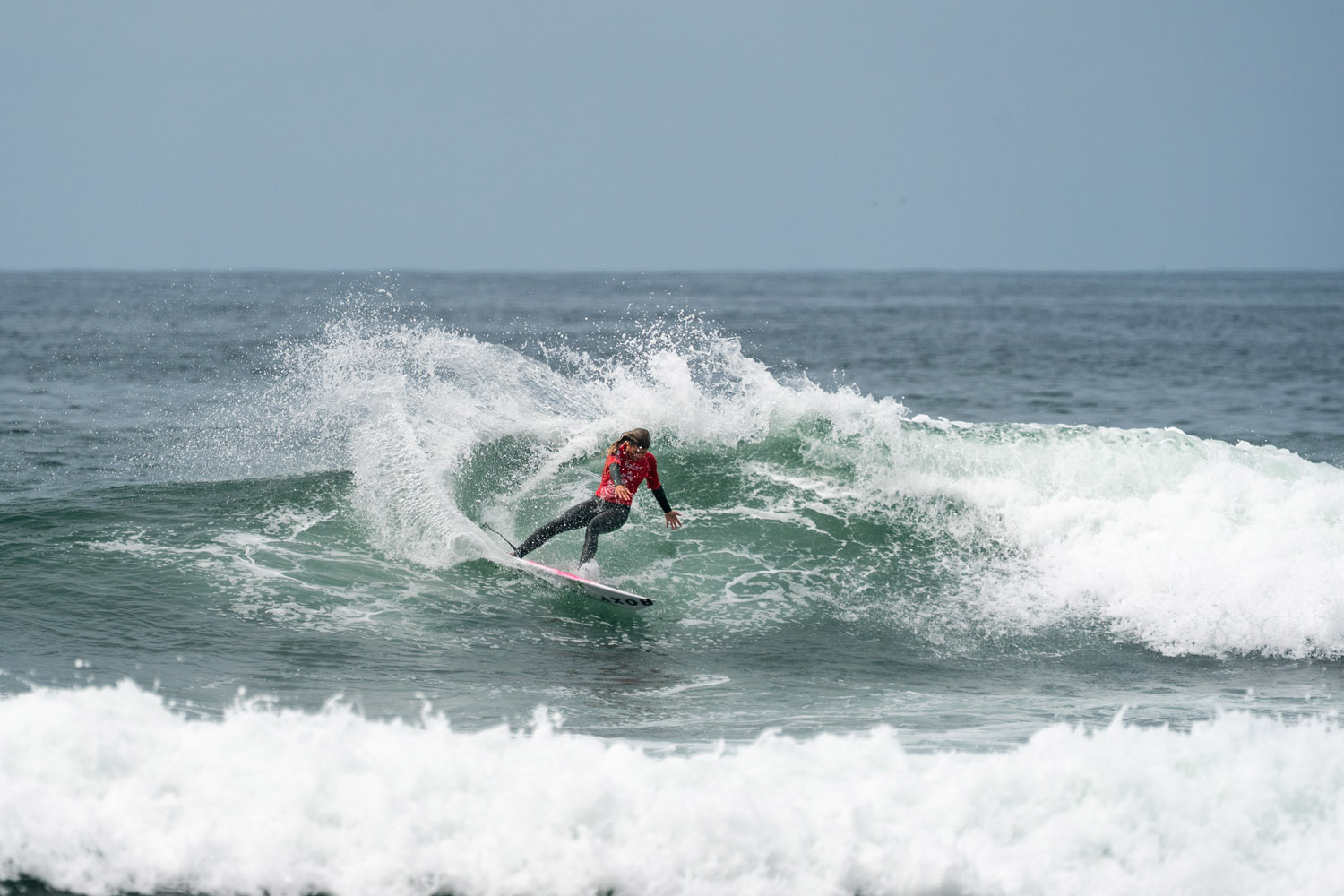
Milla Coco Brown, Team Australia. Photo: Pablo Jimenez
Jacob Turner (HAW) Sets the Tone, Tiger Abubo (HAW) Follows with Round-Topping Numbers
Dropping a tail-high reverse in the middle of a long left, Jacob Turner (HAW) posted the first excellent score of U/18 boys Main Round 3, an 8.23, to win his third consecutive heat. One of the most exciting up-and-coming free-surfers, Turner has already made a name for himself amongst some of the hardest-charging surfers in the world. The 18-year-old has been enjoying being a part of Team Hawaii, even if he’s not convinced a competitive future is on the cards.
“It’s cool, representing Hawaii is sick, all the boys are so cool and it’s a fun trip,” Turner said. Everyone is pushing each other and it’s like, ‘Oh, let’s make this next round,’ and ‘Ahhhh,’ just everyone psyching and it’s sick.”
Though Turner’s sister, Leah Turner (HAW), was eliminated along with good friend Legend Chandler (HAW), another teammate, Tiger Abubo (HAW), claimed the highest single-wave score and heat total of the round. Abubo’s sharp backhand picked up an excellent 8.50 that contributed to his 14.90 heat total.
The returning silver medallist, Hawaii has collected a total of 18 team medals, just one less than the most successful team, Australia. Though dipping down the rankings to No. 7 today, the four-time Team World Champions are still looking strong as the event edges closer to the end.
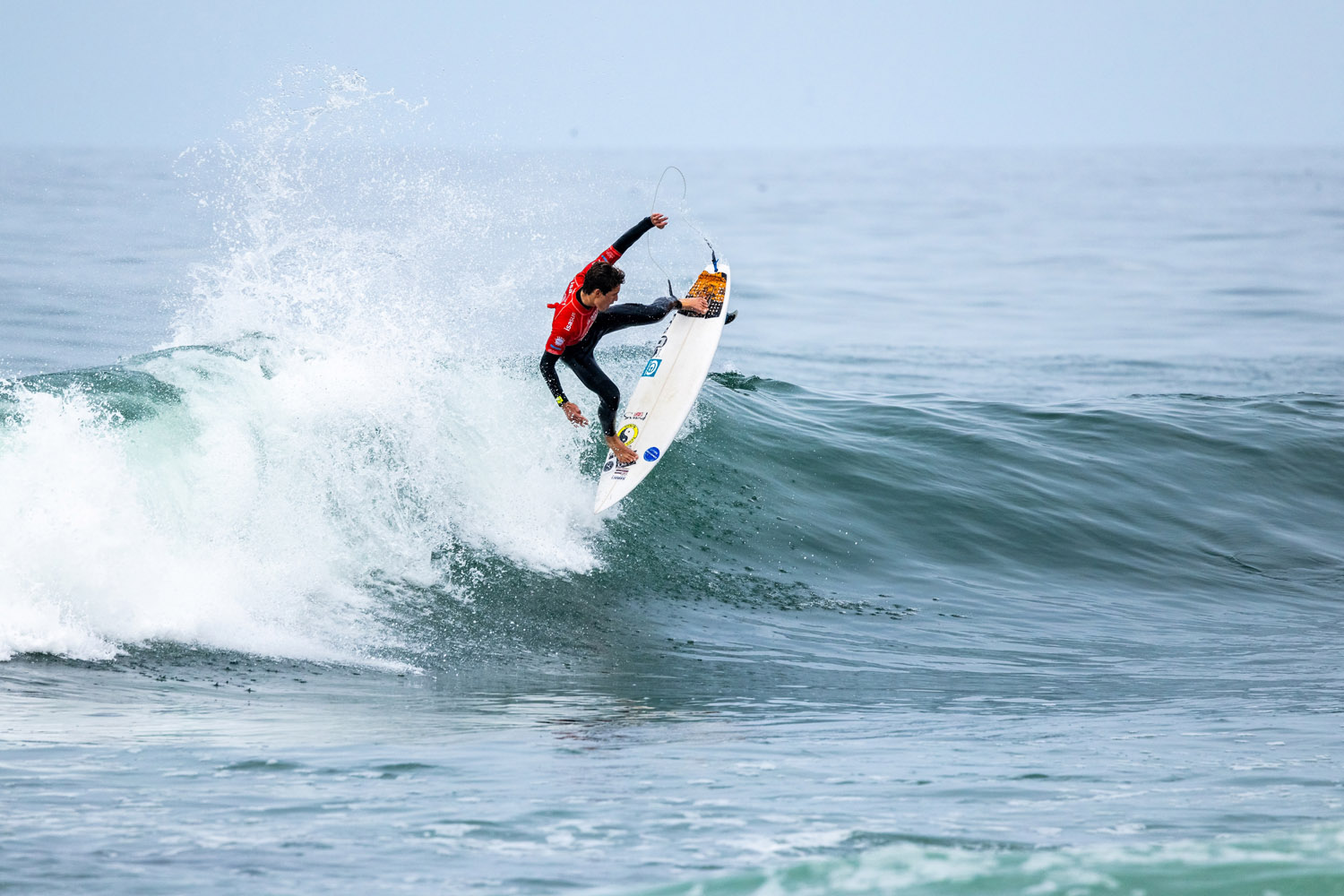
Jacob Turner, Team Hawaii. Photo: Jersson Barboza
Samuel Lowe (AUS) Continues Excellent Form as Lukas Skinner (ENG) Rises
Two further excellent scores arrived in U/18 boys today courtesy of Samuel Lowe (AUS) and Lukas Skinner (ENG). For Lowe, it was the third heat in a row to feature a ride in the 8-point range, but the first for Skinner. The back-to-back U/16 boys silver medallist, Skinner, has been stealthily moving through his first U/18 draw, hoping to leave plenty in the bag for later in the event. After a convincing victory in his Round 1 heat, the 17-year-old has now had back-to-back heats of waiting for scores on the sand before taking the win in each.
“Another day of waiting for me, but yeah, now it feels super good to finally have an excellent score on the board,” Skinner said. “I’ve had two heats now where I’ve had real fun waves and had a couple of 6’s, but it was nice to reach out of that zone and go excellent. The weather is nice, the waves are pumping all day. I just feel excited and ready to kind of get scores whenever I need them. I’m feeling super relaxed and I’m feeling good about my surfing and my strategy, so I’m gonna keep going.”
Competition will resume tomorrow, Friday, December 12, at 7:00 a.m. PET with U/18 boys Main Round 4 at Punta Rocas and U/16 boys Main Round 3 at El Bosque.
Intensity Rises as Tight Battles Define Day 7 of the 2025 ISA World Junior Surfing Championship
Punta Rocas, Peru – December 12, 2025, report by ISA
Competition heated up on day seven of the 2025 ISA World Junior Surfing Championship (WJSC), with intense battles going down to the final seconds. A less consistent two-to-three-feet of swell meant wave selection was crucial as surfers battled to be in the best position. Main Round 4 was completed across U/18 boys, U/18 girls, and U/16 girls, at the peak of Punta Rocas, while U/16 boys Main Round 3 was held at the inside left of El Bosque.
For the third day running, Brazil was able to maintain the sole lead in the rankings. Despite losing two surfers today, the two-time Team World Champions still hold a full team in U/16 boys, and two surfers across the remaining three divisions. Meanwhile, USA held two surfers across all four divisions to move into second place. Australia experienced their first of multiple eliminations in the opening heat of the day as a result of an interference — one of many that took place in the peaky conditions — but also carried two surfers in all divisions bar one.
Romeo Chavez (COL) Controls Stacked Heat With Confident Performance
A stacked U/18 boys Main Round 4 heat saw two former U/16 boys silver medallists, Lukas Skinner (ENG) and Inigo Madina (FRA), come up against Mitchell Peterson (AUS) and Romeo Chavez (COL). Taking control from the start, Chavez posted two solid scores before his competitors could find anything. After two low-scoring waves, Skinner managed to find an option that would allow him to open up, moving him into second, while Peterson and Madina struggled to break out of the 4-point range. Competing in his sixth WJSC, Chavez returns having missed out on a historic U/16 medal for Colombia by one place in 2024 and now continues strong as he moves forward in the draw in Peru.
“Before going into the water I listened to a lot of praise music and I was asking God for everything to go well, and that really put me at ease,” Chavez said. “I knew where the waves were. I knew I had to push the competitors a little further to the right so I could then drop in. Thank God the waves came right where I was looking and I was able to catch a good wave at the start, so it gave me peace of mind.”
Both U/18 Australians Maverick Wilson (AUS) Samuel Lowe (AUS) won their heats in Round 4 and advanced to Round 5.
Former medallists Dylan Donegan (ESP) and Thiago Passeri (ARG) also hung on in boy’s U/18 and U/16, respectively. While Donegan’s required number came late, it wasn’t quite as heart-stopping at Passeri’s, who found his best score of the heat in the final seconds.
Ocea Green’s (CAN) Powerful Backhand Lights Up Punta Rocas
After a tough loss in U/18 girls, Ocea Green (CAN) has continued to bounce back in a big way in the U/16 division. Posting the highest-single wave score of the day for the second time in the event, Green unleashed on her backhand, getting significant release on her tail to earn an 8.67. With a backup score of a 5.73, Green also collected the highest girls heat total of the day (14.40) to advance ahead of Zoey Kaina (HAW), who surfed a solid heat of her own.
“This has been one of my favourites for sure. I love these events with all the team because everybody’s doing all the adventures with you. It’s so much fun. All of these people surfing are all my really good friends, so it’s fun to all have an event together and just cheer everybody on. My biggest takeaway is that I need to keep catching waves. That was my biggest problem in my first few heats.”
Australia's Charli Hately and Lucy Darragh have also advanced to Round 5 where they have been placed in a Heat 2 of Round 5 together, meaning they will be surfing against each other with 1st placed in their heats, Maeva Guastalla (BRA) and Kokoro Baba (JAP).
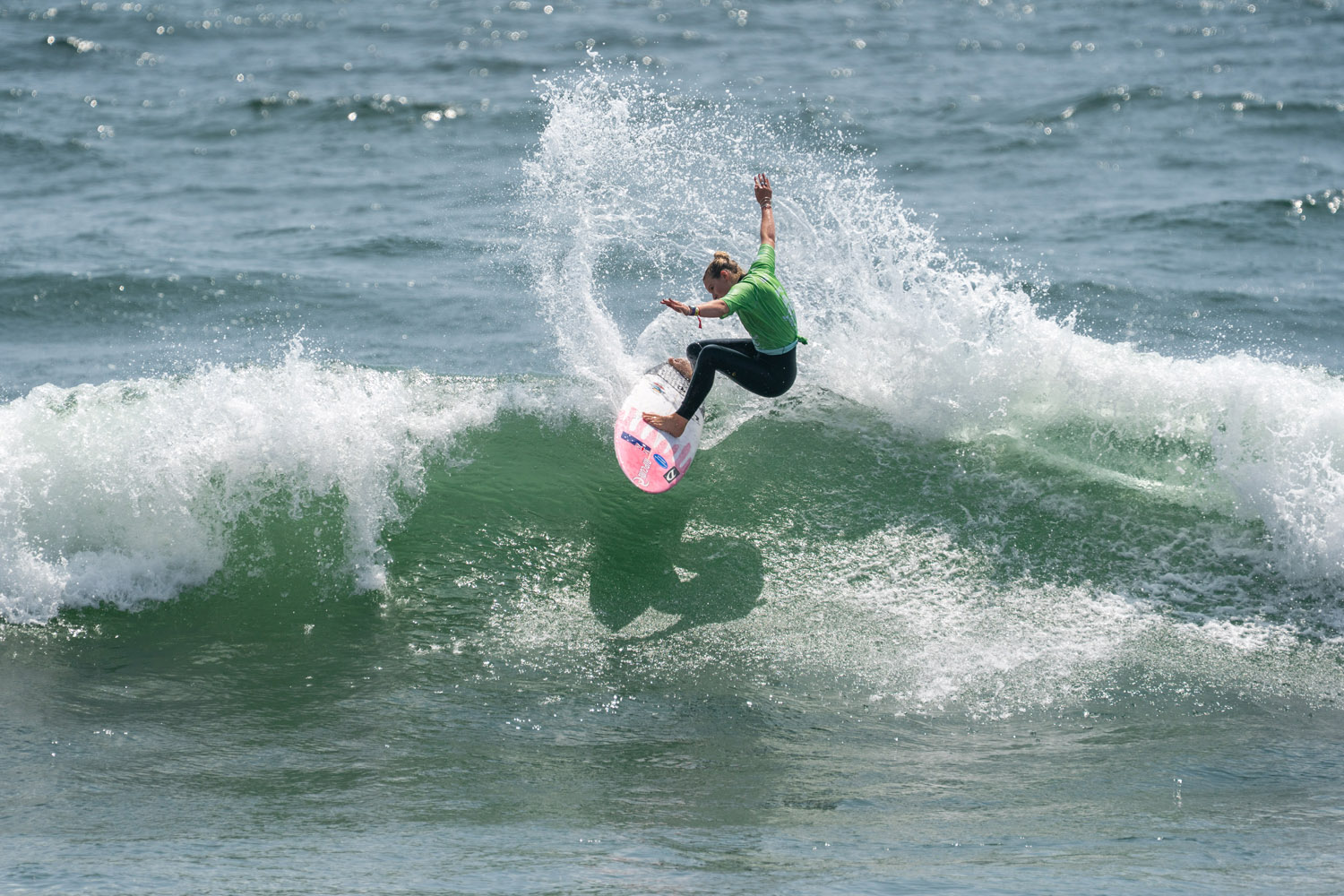
Olive Hardy, Team Australia. Photo: Pablo Jimenez
Leia Millar (NZL) Locks Into Rhythm to Top U/18 Girls Numbers
One surfer who locked completely into rhythm with the ocean on a tricky day was Leia Millar (NZL), who collected a 13.64 heat total, the highest of the day for U/18 girls. Millar picked up her counting scores courtesy of two inside double-up rights that stood up perfectly for the 18-year-old to draw tight critical arcs. Appearing in her third and final WJSC, and for the first time in U/18 girls, Millar has already improved on her best ever finish.
“I’ve been watching it for the last hour and I kind of knew what I was looking for,” Millar said. “I was trusting that when I went out there I would see one that I knew was what I wanted, one that had a bit of a double-up on it.”
Directly following Millar’s heat, her teammate Lola Groube (NZL) secured the win in a tight heat that saw Jin Shuhan (CHN) draw an early interference. The team also picked up a convincing victory from Vitor Bauermann (NZL) in U/16 boys, seeing New Zealand maintain a place in the top 10 in the rankings.
Dynamic Showcase From Taro Matsuno (JPN) Sets the Day’s High Mark
Staying active in a slow ocean, Taro Matsuno (JPN) built across the duration of his U/16 boys heat with his speedy, aggressive backhand building momentum throughout. A 7.43 was joined by an 8.50 after the 15-year-old closed out a three-turn combo with an extremely critical end section hit. Matsuno’s 15.93 heat total was the highest of boy’s competition for the day, as was his single-wave score. Competing in his first ISA event, Matsuno was excited to move deeper in the draw.
“I’m super-stoked to make my heat, really happy,” Matsuno said. “I was so stoked to get an excellent score. As the heats keep progressing, my opponents get stronger too. So I am going to deliver my best surfing and then some and I am absolutely going to win.”
Ocean Lancaster (AUS) and Caden Francis (AUS) placed 2nd and 1st respectively in their Round 3 heats and have advanced to Round 4, however Max McGillivray placed 3rd
Lanea Mons (USA) Comes Out on Top in Clash of Former Medallists
A rough day for Japan saw many of their surfers experience narrow losses, but none quite as tough as U/18 girls Main Round 4, Heat 3. Featuring three former medallists, Lanea Mons (USA), Clémence Schorsch (FRA), and Mirai Ikeda (JPN), along with Yuna Takahashi (JPN), it was always going to be a tough heat. But with limited opportunities, Mons capitalized on the best waves, leaving the other three to find smaller inside options. A single turn from Schorsch on a larger wave proved to be the difference, with both Japanese surfers eliminated.
“All those girls are so good, I knew that going in, but you just have to understand that in surfing contests in every heat there can be good names, bad names, or whatever, but no matter what, you can never know what’s going to happen,” Mons said. “Anything could happen, like a 20-minute lull, or someone you’ve never heard of just drops a 9, or someone who’s insane chokes, or whatever. And I know that that can happen to me too. So just kind of staying humble, just being super energetic and assertive in heats and giving it all you can, knowing that you can’t really control what the other girls are doing, but you can try your best and control what you can control.”
Australia's Isla Huppatz also bowed out in Round, placing 3rd behind Spain's Sol Borelli and Tahiti's Raipoe Chapelier, Milla Coco Brown placed second in her heat behind China's Yang Siqi and advances to Round 5.
Competition will resume Saturday, December 13, at 7:00 a.m. PET with U/18 boys Main Round 5 at Punta Rocas.
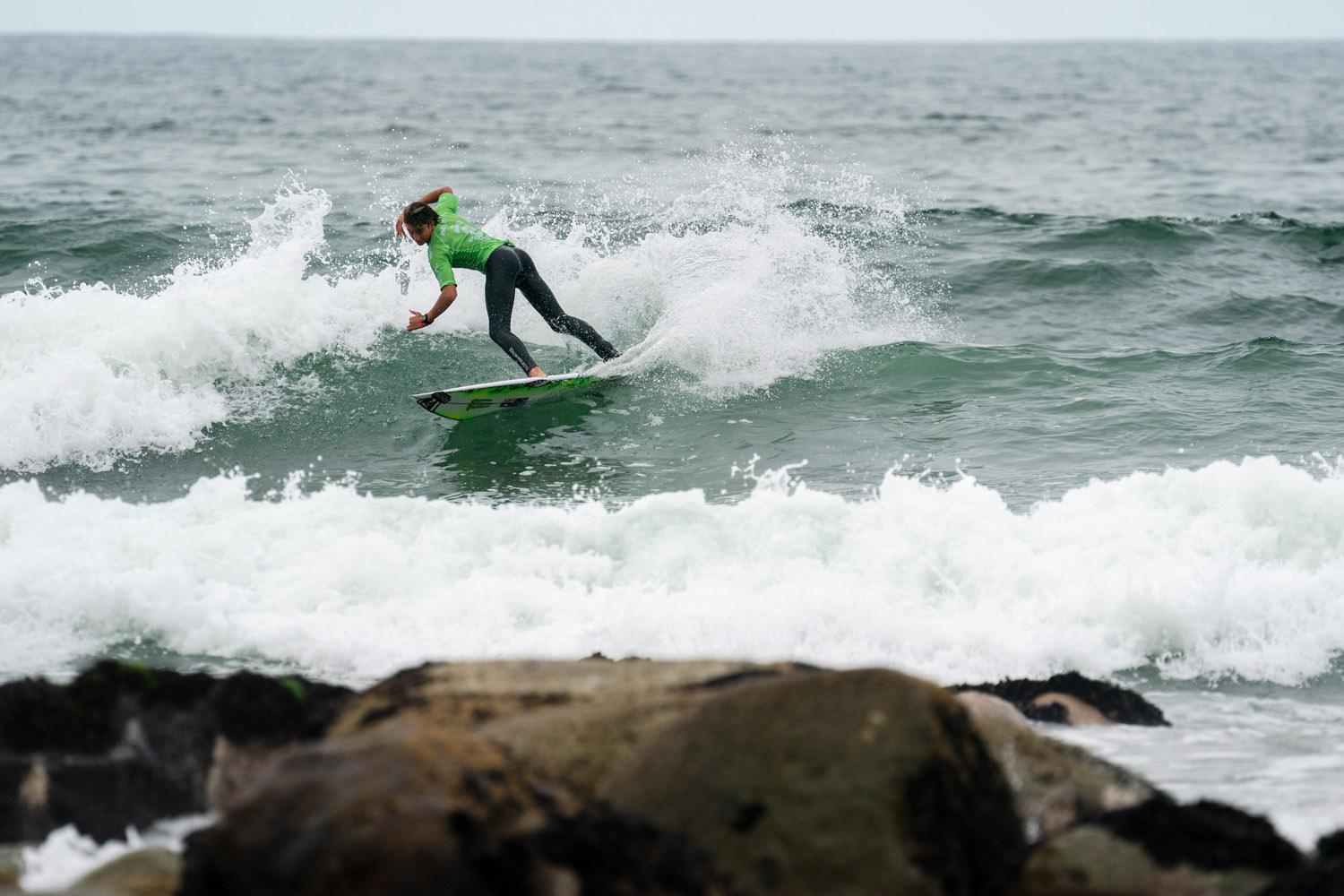
Caden Francis, Team Australia. Photo: Pablo Jimenez
Major Performances Lock In Finals Day for the 2025 ISA World Junior Surfing Championship
Punta Rocas, Peru – December 13, 2025, report by ISA
Australia claimed a definitive lead in the rankings as Finals Day was set on day eight of the 2025 ISA World Junior Surfing Championship (WJSC). A rising three-to-four-feet swell saw the peak at Punta Rocas in full effect, with both directions contributing to major scores throughout the day. With Rounds 5 and 6 run in U/18 boys, Rounds 4 and 5 in U/16 boys, and Round 5 of both girls age groups, Semifinalists were decided in all divisions. It’s all set up for an exciting day of competition to crown World Junior Champions tomorrow.
As rankings shifted through the day, Australia’s standing gradually rose, increasing to a large lead by day’s end. After multiple days at the top of the rankings, Brazil dipped to third, narrowly sitting behind the USA and ahead of Peru. The three nations now sit within 300 points of each other, with Australia almost 900 points ahead.

Milla Coco Brown, Team Australia. Photo: Pablo Jimenez
For Australia, devastating losses from U/18 boys standouts Maverick Wilson (AUS) and Samuel Lowe (AUS) were replaced by major moments from Ocean Lancaster (AUS) and Caden Francis (AUS) in U/16 boys. Milla Coco Brown (AUS) also continued her redemption run in U/18, but a single U/16 girls heat may have proved most decisive to the teams race when Chari Hately (AUS) jumped from fourth to second in the final moments to move into the Semifinals alongside Lucy Darragh (AUS).
“I’m so stoked Charli [Hately] got the score in the end,” Darragh said. “It’s so good to see us both get through and yeah, pumped for the semis. I’ve been looking forward to this comp all year. Travelling with the team, staying with the team, like the whole team spirit, you know, doing the ring of fire, tunnel when we go out, it’s been so sick. It’s exceeded my expectations, this comp.”

Charli Hately, Team Australia. Photo: Pablo Jimenez
Lukas Skinner’s (ENG) Momentum Rises With Division-Leading Performances
With his campaign unfolding exactly as planned, back-to-back U/16 Silver Medallist Lukas Skinner (ENG) continued to build momentum. The 17-year-old opened the day with his first excellent heat total in Peru, before adding the highest single wave score of the U/18 boys division in the afternoon. Skinner’s Main Round 5 heat saw an 8.00 joined by an 8.27 for a 16.27 heat total as his seamless style carried him through smooth carves and effortless airs, all with impeccable flow. Adding significant power to the opening carves of an important wave in his Main Round 6 heat, the 17-year-old at last showed emotion as he claimed a 9.10.
“I’ve just been enjoying myself this whole week,” Skinner said. “I’ve had some good heats so far. That was my best one, and I feel like I’ve got so much more in the tank. I’m just going to keep going. My board feels insane, and yeah, I’m stoked. Yesterday I had a close one. I didn’t really even get to go into a gear. I feel like I’ve got sixth and seventh gear to go.”
Skinner advanced in his Main Round 6 heat ahead of the surfer who defeated him in the Final in 2024, Dylan Donegan (ESP). Donegan was able to hold on to advance ahead of Dane Libby (USA) and Francisco Anglani (ITA) as he looks to add an U/18 title to his status as reigning U/16 ISA World Junior Champion. The pair are joined in the Semifinals by Jacob Turner (USA), Jay Phipps (FRA), Tiger Abubo (HAW), and Eeli Timperi (FIN). The elimination of two Brazilian surfers in Main Round 6 by Abubo and Timperi dealt a massive blow to Brazil’s status in the rankings. It also marks the pair’s strongest campaigns yet in the third WJSC for each.
In-form Lanea Mons (USA) Continues Her Charge Back To the Podium
For the second day in a row, Lanea Mons (USA) claimed a commanding heat win, catching just two waves to take out her Main Round 5 heat. The 2023 U/16 silver medalist opened with an excellent 8.50 and backed it up with a 6.17, both on her forehand on the left. The resulting 14.67 heat total was the highest of the round, as was her single-wave score. The 16-year-old exuded confidence as she moved one heat away from a second medal.
“This event, there’s so many heats you have to grind through and so many good competitors to surf against, but that’s the beauty of it,” Mons said. “I’m just so grateful to be here. It’s kind of amazing because waking up at whatever, like 5 a.m. every morning, coming down to the beach and then getting to surf the heat. If I had to live in a simulation, this would be a pretty good one to live in. It’s so awesome getting to compete every day, doing what I love. I’m stoked I got some good lefts.”
Behind Mons, a close race for second played out between Miamar Soto Pérez (PUR) and Raipoe Chapelier (TAH), which went in favor of the Puerto Rican. In the following heat, 2024 Copper Medallist Milla Coco Brown (AUS) took the win over Sol Borelli (ESP), while the third and final matchup of the round was claimed by two-time medalist Clémence Schorsch (FRA). Schorsch also posted a score in the excellent range, an 8.17, to advance into the Semifinals for the third consecutive year ahead of Olympian Siqi Yang (CHN).
Excellence From Zoey Kaina (HAW), While Catalina Zariquiey (PER) Shines for Host Nation
Competing in her first ISA competition, Zoey Kaina (HAW) has delivered highlight surfing all week, today adding a second excellent score to her overall performance. A backhand two-turn combo on the right at Punta Rocas earned the 15-year-old an 8.50. Coupled with a 6.43, Kaina’s 14.93 heat total was the day’s highest of the girls. Since originally making a name for herself in Stab High competition, Kaina has proved to be a highly consistent competitor across many spheres, and now moves through to Finals Day in her most important event yet.
“It’s super sick, my goal here was to make Finals Day,” Kaina said. “The waves were really fun and I had a lot of fun out there. I dropped in on that wave, the second wave of the set, and I was like, let’s go. I dropped in, did a little carve, then saw the pocket and snapped. That felt good, then I came up and did another one, and that felt good too. I was hyped up by that one.”
The final remaining girl in the draw for the host nation, Catalina Zariquiey (PER), also delivered another solid heat win. Having posted some of the best numbers of her division all week, the 16-year-old held court over event standouts Ocea Green (CAN), Amari Moore (PUR), and Miliani Simon (TAH) to progress to the Semifinals.
“It feels amazing, the waves are really good, it’s really fun, and I can’t believe I’m in the semi,” Zariquiey said. “I’m super happy and proud, and my team has been so supportive. I’m grateful for the support from all Peruvians, my team, and my family, and proud to be representing my country here at home. Let’s give it our all for the final day.”
Advancing behind the Peruvian was Green, who will meet Lucy Darragh (AUS) and Bailey Turner (USA) in the second Semifinal, while Zariquiey will take on Kaina and Charli Hately (AUS) in the first.

Lucy Darragh, Team Australia. Photo: Pablo Jimenez
Anuar Chiah (BRA) Surges Into Semifinals as Bastián Arevalo’s (PER) Determined Run Pushes Him Forward
After initially falling into the repechage, Bastián Arevalo (PER) continued his strong trajectory through the event. Despite posting excellent scores in the two heats he surfed today, the 15-year-old progressed through both in second place. Winning ahead of Arevalo in Main Round 5 was Anuar Chiah (BRA), whose critical backhand approach to the rights of Punta Rocas earned a 14.06 two-wave heat total that included a 7.73. Part of the gold-medal winning Brazil team in 2023 where he came close to the Final, the 16-year-old was excited to guarantee an even better result in 2025.
“I’m so happy to advance to the Semifinals,” Chiah said. “This wave is pretty fun. Punta Rocas is similar to my home, Matinhos. I’m so happy to represent Brazil, it’s a big team. It’s been a long championship, I’ve already advanced through several heats. I want to dedicate this heat to my grandmother who passed away recently, and she knows how hard I fought to be here.”
Chiah will come up against his only remaining teammate, Pablo Gabriel (BRA), in the first U/16 heat of Finals Day, along with 2024 U/16 Bronze Medallist Thiago Passeri (ARG), while Arevalo will face Australian teammates Ocean Lancaster (AUS) and Caden Francis (AUS).

Caden Francis, Team Australia. Photo: Jersson Barboza
Competition will resume tomorrow, Sunday, December 14, at 7:00 a.m. PET with U/16 boys Semifinals at Punta Rocas.
Australia Claims Back-to-Back Team Gold Medals on Historic Finals Day at the 2025 ISA World Junior Surfing Championship
Punta Rocas, Peru – December 14, 2025, report by ISA
A historic Finals Day at the 2025 ISA World Junior Surfing Championship (WJSC) saw four World Junior Champions crowned, along with the Team World Champion. Punta Rocas turned it on with some of the best conditions of the event, delivering pumping four-to-five foot peaks throughout the Semifinals and Finals of all four divisions.
Following a drought of over a decade, the most successful team in WJSC competition have now gone back-to-back after securing the 2025 Team World Championship. Australia claimed four medals to earn their ninth team gold and their 20th team medal overall. Led by a gold from Ocean Lancaster (AUS), the team also saw Milla Coco Brown (AUS) take silver, with bronze for Caden Francis (AUS) and Lucy Darragh (AUS).

Milla Coco Brown, Team Australia - Finals. Photo: Jersson Barboza
Also a part of the gold-medal-winning 2024 team, where Lancaster’s early performances put the world on notice, the 16-year-old returned with laser focus. Narrowly avoiding elimination early in the event despite posting one of the highest scores up to that point, Lancaster regrouped to carry his strong form throughout. Lancaster’s victory follows full investment from his family, who relocated their lives to support his surfing career.
“I’ve got everything replaying in my head from the start to the end of that heat,” Lancaster said. “I was honestly losing hope toward the dying seconds, and then I had one of the greatest opportunities ever. I wasn’t even thinking about the score, all I was thinking about was absolutely belting the hell out of that wave and winning the comp. I’m so proud right now. My family moved up the coast so I could work on my training, leaving our friends and family behind, and it’s all led to this moment. I’m so grateful. Traveling here with Team Australia has been one of the most magic moments of my life. I’m proud to represent such an awesome team and bring home gold.”
After Pablo Gabriel (BRA) ran away with an early lead in the U/16 boys Final, the action came thick and fast. First, Ocean Lancaster (AUS) earned an 8.13 for seamless carves highlighted by a full roundhouse cutback, before teammate Caden Francis (AUS) exhibited pure flow in a reply that earned the highest score of the event, a 9.57, for exceptionally critical surfing. Right behind him, Thiago Passeri (ARG) was delivering excellence of his own to earn an 8.40. Within the final 45 seconds, Lancaster and Passeri caught waves, each needing a score in the 7-point range to take the win. Both posted excellent scores, but it was a 9.00 from Lancaster that sealed the victory. Passeri, the 2024 U/16 bronze medallist, won his second medal, the silver, with Francis taking bronze, Gabriel, copper.

Ocean Lancaster, Team Australia. Photo: Pablo Franco
Also a part of the gold-medal-winning 2024 team, where Lancaster’s early performances put the world on notice, the 16-year-old returned with laser focus. Narrowly avoiding elimination early in the event despite posting one of the highest scores up to that point, Lancaster regrouped to carry his strong form throughout. Lancaster’s victory follows full investment from his family, who relocated their lives to support his surfing career.
“I’ve got everything replaying in my head from the start to the end of that heat,” Lancaster said. “I was honestly losing hope toward the dying seconds, and then I had one of the greatest opportunities ever. I wasn’t even thinking about the score, all I was thinking about was absolutely belting the hell out of that wave and winning the comp. I’m so proud right now. My family moved up the coast so I could work on my training, leaving our friends and family behind, and it’s all led to this moment. I’m so grateful. Traveling here with Team Australia has been one of the most magic moments of my life. I’m proud to represent such an awesome team and bring home gold.”
After Pablo Gabriel (BRA) ran away with an early lead in the U/16 boys Final, the action came thick and fast. First, Ocean Lancaster (AUS) earned an 8.13 for seamless carves highlighted by a full roundhouse cutback, before teammate Caden Francis (AUS) exhibited pure flow in a reply that earned the highest score of the event, a 9.57, for exceptionally critical surfing. Right behind him, Thiago Passeri (ARG) was delivering excellence of his own to earn an 8.40. Within the final 45 seconds, Lancaster and Passeri caught waves, each needing a score in the 7-point range to take the win. Both posted excellent scores, but it was a 9.00 from Lancaster that sealed the victory. Passeri, the 2024 U/16 bronze medallist, won his second medal, the silver, with Francis taking bronze, Gabriel, copper.

Caden Francis, Team Australia. Photo: Sean Evans
Spain Makes History: Dylan Donegan (ESP) Earns Second Boys Gold, Sol Borelli (ESP) Secures First-Ever Girls Title
Spain made dual history when their surfers claimed wins in both U/18 divisions. After Dylan Donegan (ESP) became the first boy to win two gold medals, and the first surfer ever to win in both U/16 and U/18 divisions, Sol Borelli (ESP) followed by claiming the first-ever girls WJSC gold medal for her nation. It was a full-circle redemption moment for Borelli, who missed out on the Final in the U/16 division by one place in 2024 and is now the ISA U/18 World Junior Champion. The historic records for Spain follow on from that set by Annette Gonzalez-Etxabarri (ESP) in the 2025 ISA World Surfing Games, showcasing the depth of talent emerging from the European nation.
“Oh my god, it’s incredible, I can’t believe it,” Borelli said. “Dreams come true, I just want to say that. I’m so happy with myself, with my team. I just want to thank my father, my family, and my friends.”
Competing against former medallists Milla Coco Brown (AUS) and Clémence Schorsch (FRA), along with Olympian Siqi Yang (CHN), Borelli was the last to open her campaign. Posting a 7.00 on her first wave, Borelli stayed active to gain a lead that she held up until the final moments. With a score from Borelli still to come, Brown posted her two highest scores of the heat. Though Brown eventually earned her required numbers to take the lead, Borelli’s score was announced as an 8.33, securing the historic medal for the Spaniard. Brown added a silver medal to her 2024 copper, Schorsch collected her third medal in a row, the bronze, while Yang’s copper medal will go down in the history books as the first-ever ISA medal won for China.
Taking a somewhat nonchalant path through his first U/18 campaign, Donegan showed hints of brilliance, but clearly saved the best for last. Donegan was patient with his wave selection, catching just two waves in the first two-thirds of the heat. He made them count, however, posting a 9.00 and 8.50 for a 17.50 heat total, the highest of the event. Though Hawaiians Jacob Turner (HAW) and Tiger Abubo (HAW) continued their strong form to post solid scores of their own, Donegan’s biggest threat came from two-time U/16 Silver Medallist Lukas Skinner (ENG), who opened with an excellent 8.23, but ultimately stayed too patient to find a second score. Skinner finished with the copper medal, Abubo with bronze, Turner, silver.
“I’m just so happy I was out there,” Donegan said. “The last 10 minutes were probably the longest 10 minutes of my life. I was just like, come on, just finish. I just want this Final to finish already. I’m so happy. I want to thank everyone that’s helped me throughout these years. I don’t even know what to say anymore.”

Team Australia sends Milla Coco Brown out for her Finals bout. Photo: Pablo Franco
With U/16 Girls Win, Bailey Turner (USA) Joins Prestigious List
In an extremely even match-up, less than a point separated all four surfers in the girls U/16 Final. Catalina Zariquiey (PER) was the only regular-footer in a heat that featured three goofy-footers in Lucy Darragh (AUS), Zoey Kaina (HAW), and Turner. The early advantage went to Zariquiey, who carried a narrow lead through much of the heat. It all went down to the wire though, with Turner waiting on a score that had the Peruvian and the huge local crowd holding their breath. The 6.30 that landed saw Turner claim the win just 0.20 ahead of Zariquiey, securing both the individual gold medal for Turner and the team silver medal for USA. Zariquiey made history with her silver medal, becoming the first Peruvian girl to medal at the WJSC.
“It’s crazy, I don’t really know what to say,” Turner said. “I’m super, super happy. This has been the best trip with the team. It’s so amazing. Honestly, I didn’t really know [the situation] because they had a few scores coming in, and I was confused what scores came in or not. So I didn’t know. And then when they said it, I was so shocked, but I’m super happy. Surfing’s my favourite thing in the world, and with the team support from the US, it’s just the best.”
The fourth surfer representing the USA to win in U/16 girls, Turner adds her name to a prestigious list that includes WSL World Champions Caity Simmers (USA) and Caroline Marks (USA), the Olympic Gold Medallist, as well as Alyssa Spencer (USA).

Lucy Darragh, Team Australia - Finals. Photo: Jersson Barboza
ISA President Fernando Aguerre said:
“It’s with great happiness that I have seen these nine days of incredible competition with the best junior surfers from around the world. Some go home with medals and some without, but everyone leaves as a champion. Being here in Punta Rocas is already a gift — great waves, great camaraderie, great food, and the warmth of the Peruvian people.
“Peru has hosted ISA World Championships since the very beginning, and we are proud to return again. Thank you to FENTA, the Peruvian Institute of Sport, the government, and the people of Peru. The United Nations of Junior Surfing is all about friendship and camaraderie, and that is the real prize we take home.”

Milla Coco Brown, Team Australia - Finals. Photo: Sean Evans
RESULTS
All Results may be accessed here.
Teams
Gold – Australia
Silver – USA
Bronze – Brazil
Copper – Peru
U/16 Boys
Gold – Ocean Lancaster (AUS)
Silver – Thiago Passeri (ARG)
Bronze – Caden Francis (AUS)
Copper – Pablo Gabriel (BRA)
U/16 Girls
Gold – Bailey Turner (USA)
Silver – Catalina Zariquiey (PER)
Bronze – Lucy Darragh (AUS)
Copper – Zoey Kaina (HAW)
U/18 Boys
Gold – Dylan Donegan (ESP)
Silver – Jacob Turner (HAW)
Bronze – Tiger Abubo (HAW)
Copper – Lukas Skinner (ENG)
U/18 Girls
Gold – Sol Borelli (ESP)
Silver – Milla Coco Brown (AUS)
Bronze – Clémence Schorsch (FRA)
Copper – Siqi Yang (CHN)
